Compared to many other countries in the world, the United States of America is still an infant of sorts: while you can travel to places where cities are hundreds — or even thousands — of years old, the oldest continuously-occupied settlement in the United States celebrated 450 years of existence on Tuesday, September 8, 2015…
The Oldest Town in Each State in the United States
…and that city is Saint Augustine in Florida.
The indigenous people of North America — who are more popularly known as native Americans — will tell you that the land on which the United States was founded and generations of their ancestors have called home is also thousands of years old.
The towns which were founded afterwards have something to say about the fascinating story of the Americas, with even the town names — from Santa Fe to Cheyenne — speaking volumes about the part each one played in the creation of a powerful nation.
This article from NetCredit uses information from research of finding the oldest known settlements in each state which still exist today. The word town was defined to mean the oldest continually inhabited, independent area in each state which were chartered, founded, established, or incorporated; but the final choices were based on when people arrived and created settlements, rather than the date a town was officially designated.
In cases where debate exists pertaining to which areas were settled first, additional research was conducted, and the final decisions were based on the most trusted sources that could be found.
I have been given express written permission to use the images and the verbatim text from the aforementioned article in this article; so let us take a break from the news of the day and have a little fun going on a virtual journey through time and view the oldest town of each state in a temporal context by animating the settlements in the order in which they appeared.
1. Saint Augustine, Florida — 1565
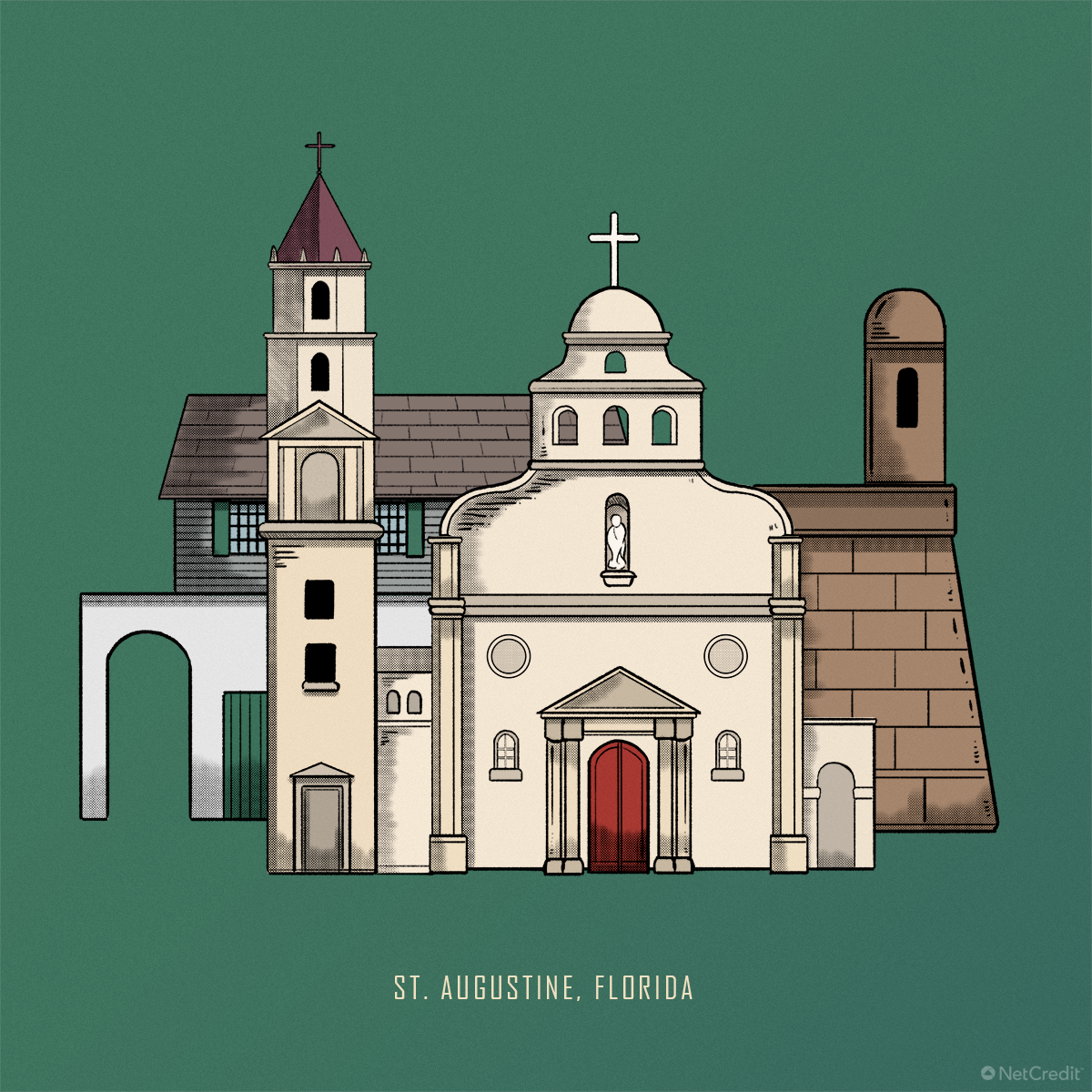
Spanish explorer Don Pedro Menendez de Aviles established the States’ first permanent settlement when he landed on the Florida coast on September 8, 1565. He planted the Spanish flag and named the fledgling town after the patron saint of brewers – he probably needed a drink after that historic journey.
2. Santa Fe, New Mexico — 1607
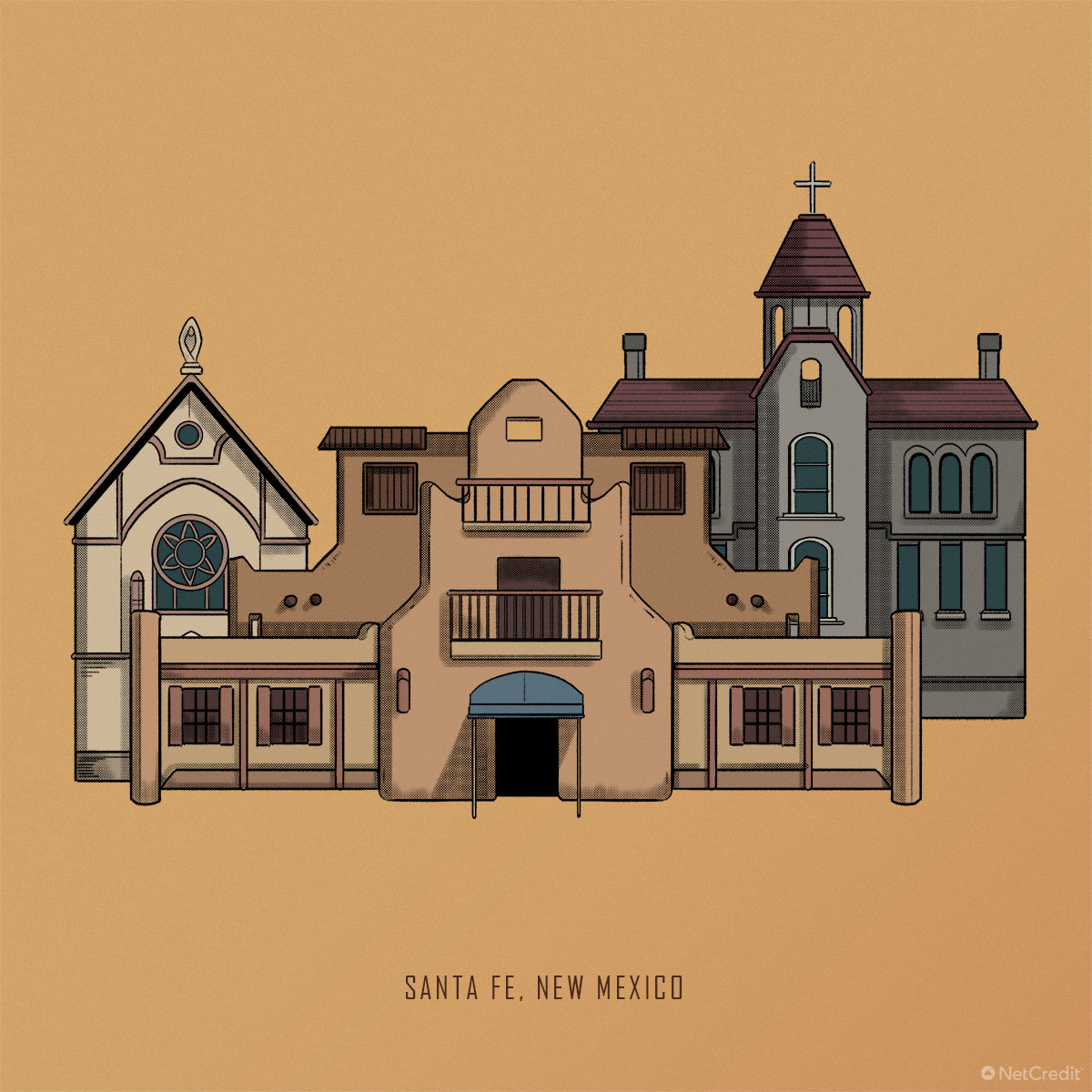
Upon settling in the area that would become Santa Fe in 1607, Spanish soldiers and Franciscan missionaries set about converting and ruling over the local Pueblo Indians. The Pueblos revolted in 1670, burning every building except the Palace of the Governors, and held the area until 1692.
3. Plymouth, Massachusetts — 1620
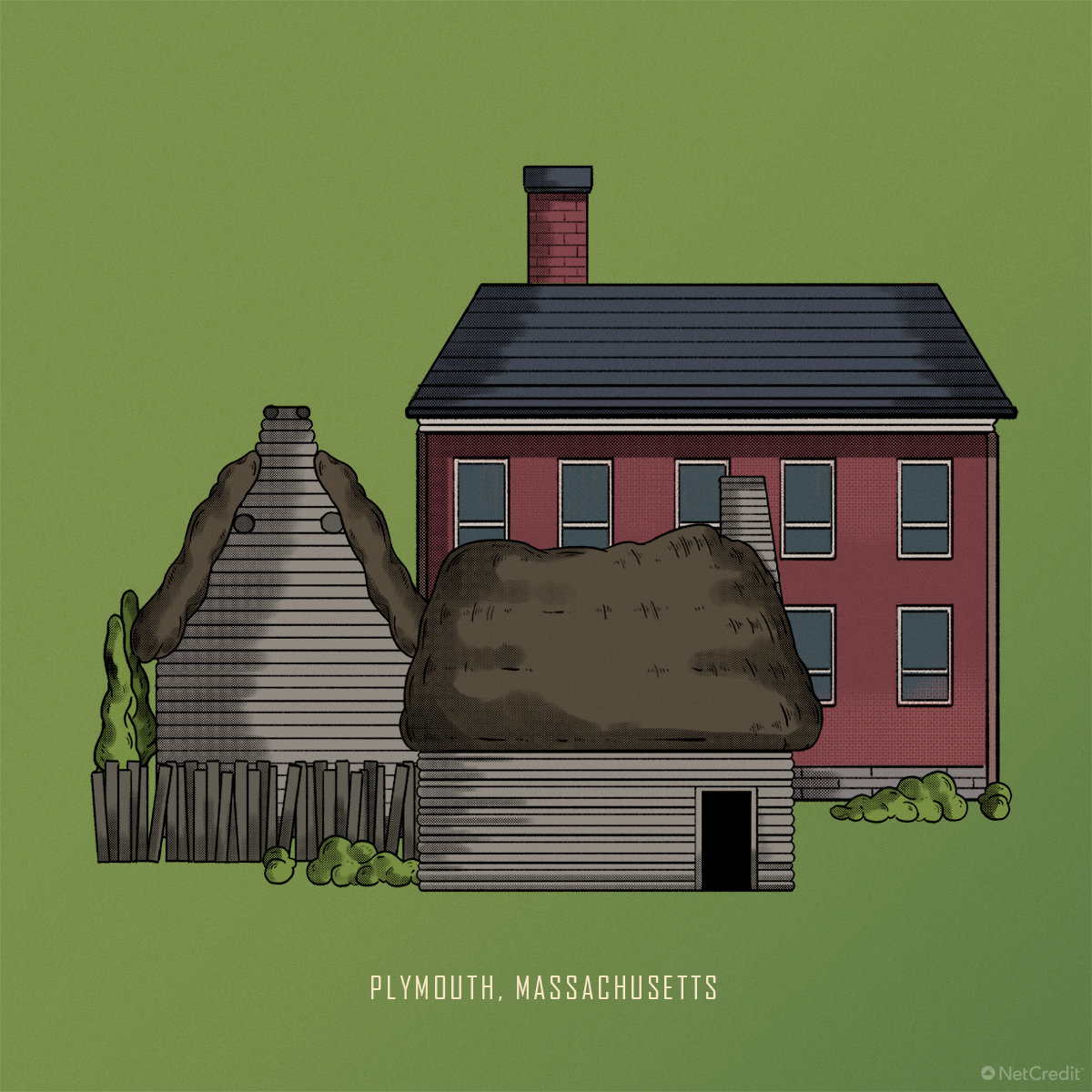
The pilgrims, religious dissenters from England, set sail for America on September 16, 1620, on the promise of a private plantation in Virginia. Poor conditions at sea led them to wash up considerably north of their intended destination; only half the settlers survived the first winter, but come harvest time a year later they were upbeat enough to establish and celebrate the first Thanksgiving Day.
4. Kittery, Maine — 1623

Once known in the Algonquin dialect as Amiciskeag – meaning “fishing point” – Kittery took its new name from the English family home of an early settler, Alexander Shapleigh. English and French colonists and Native Americans would later fight fierce battles over control of this and the surrounding land.
5. Dover, New Hampshire — 1623
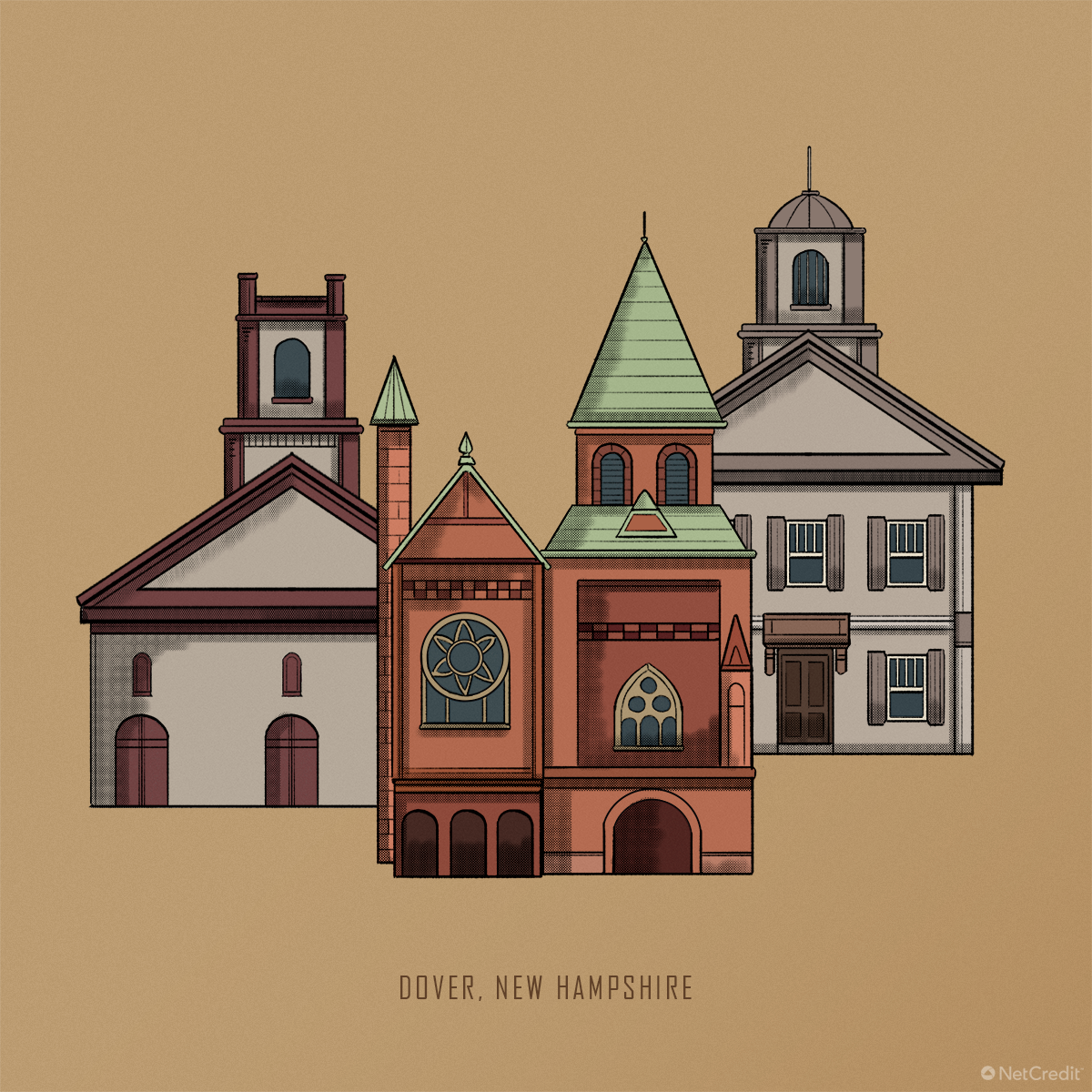
Before becoming part of the United States, Dover was known as Northam and passed between various colonial authorities while settlers argued about how the colonies would be run (including the idea of a hereditary aristocracy). The town proved to be perfectly placed to weather the centuries, thriving by turns on water power, cotton, bricks and shoe manufacturing.
6. Albany, New York — 1624
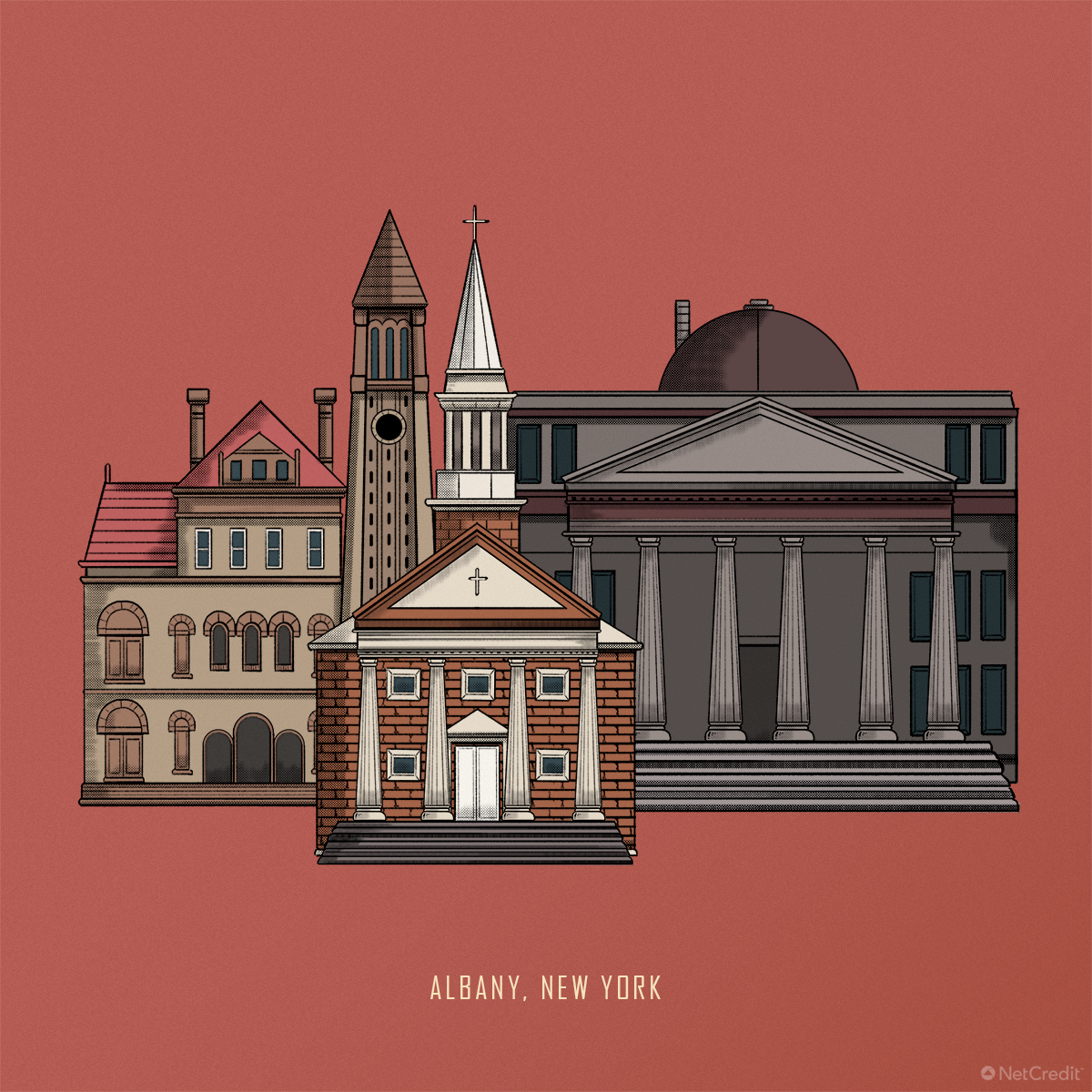
Previously home to the Haudenosaunee (Iroquois) Native Americans, the area that Albany now sits on was established as a settlement by Henry Hudson as he searched for a water route to the Far East. In addition to being New York’s capital and oldest city, Albany is the site of the first perforated toilet paper.
7. Lewes, Delaware — 1631

Lewes, the oldest town of America’s first state, is another area stumbled upon by Henry Hudson and colonized on behalf of his Dutch sponsors. Many older buildings have been preserved so visitors can still get the feel of the seventeenth century today.
8. Williamsburg, Virginia — 1633
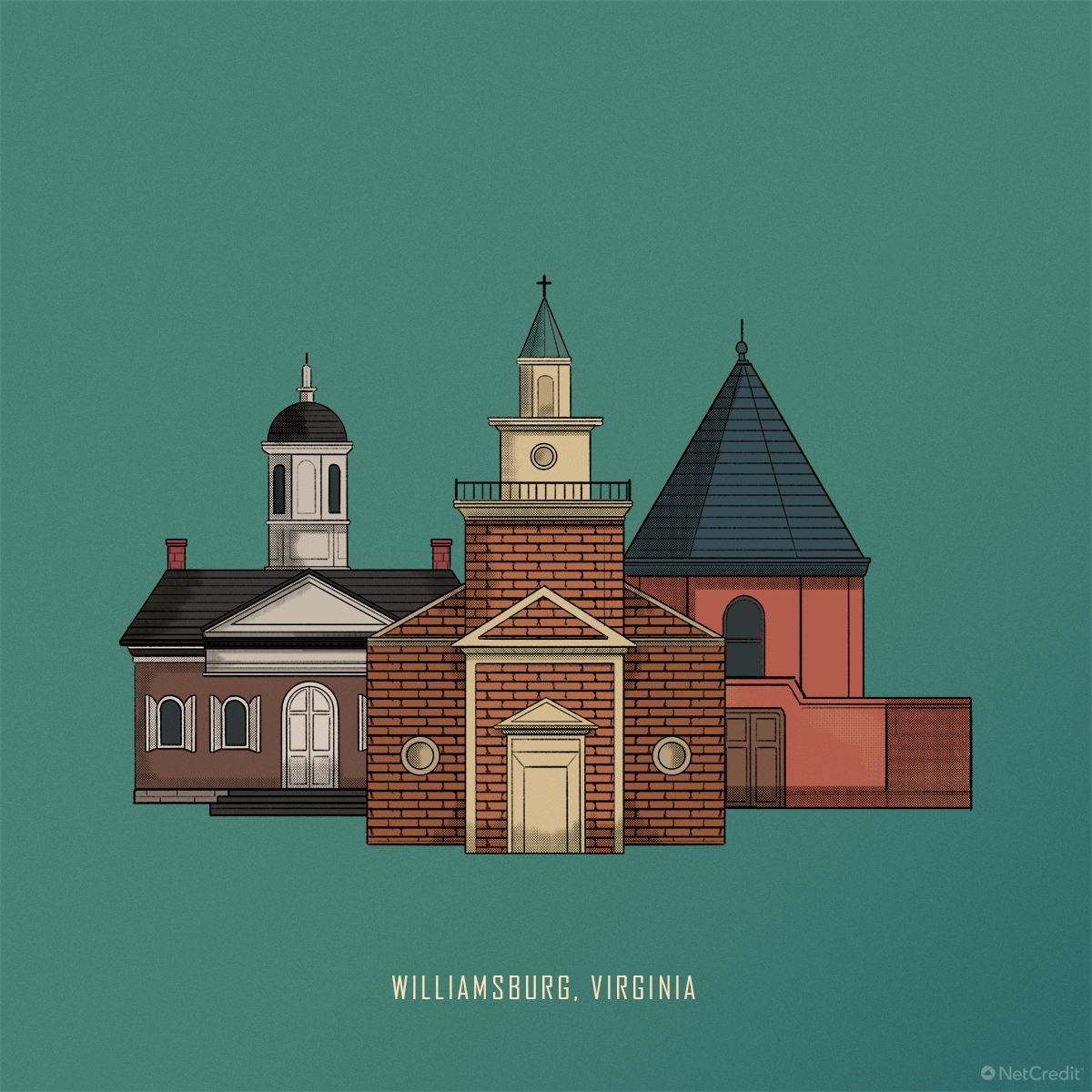
The first settlement in Virginia and the whole of the States was, of course, Jamestown in 1607. But after a fire started by a condemned prisoner in 1698, the government moved to Middle Plantation, which they renamed Williamsburg after the king of England. Although it remained inhabited, Jamestown was no longer populous enough to be considered a town, and today it is a national park.
9. Windsor, Connecticut — 1633
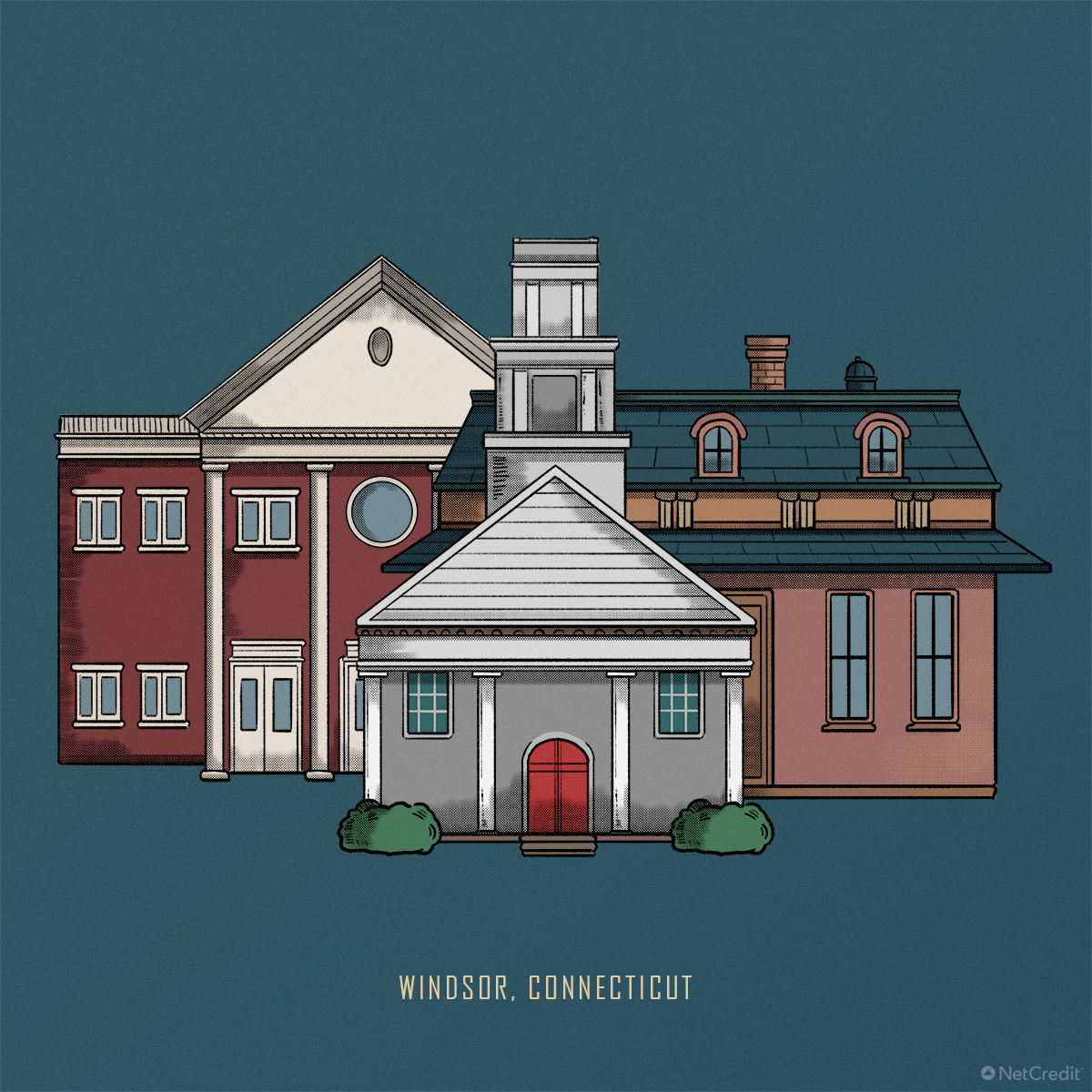
Colonists bought this land from the resident Native Americans and established it as a trading post, originally where the Farmington and Connecticut Rivers meet. It was named after the town on the River Thames where Windsor Castle stands.
10. Green Bay, Wisconsin — 1634

French explorer Jean Nicolet named ‘La Baye Vert’ for the color of the water when he landed there in 1634. The name was anglicized when the British took control of the area after the French and Indian War of 1754–63.
11. Providence, Rhode Island — 1636
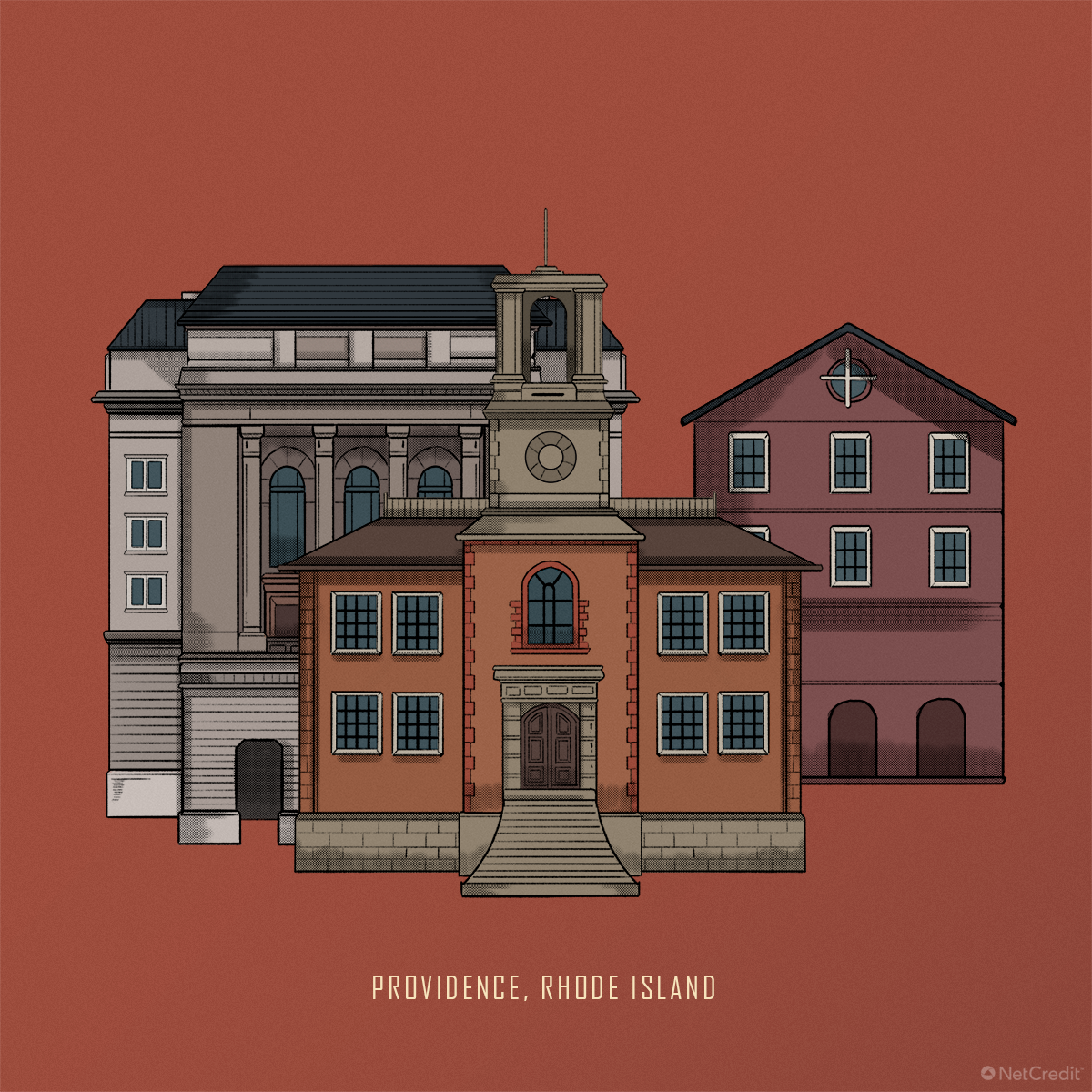
It was a ‘renegade preacher’ on the run from religious persecution in Massachusetts who founded Providence, naming it in gratitude for his safety. He bought the land from the Narragansett Indians, and it flourished due to the seaport’s position in relation to the burgeoning New World.
12. Sault Sainte Marie, Michigan — 1641
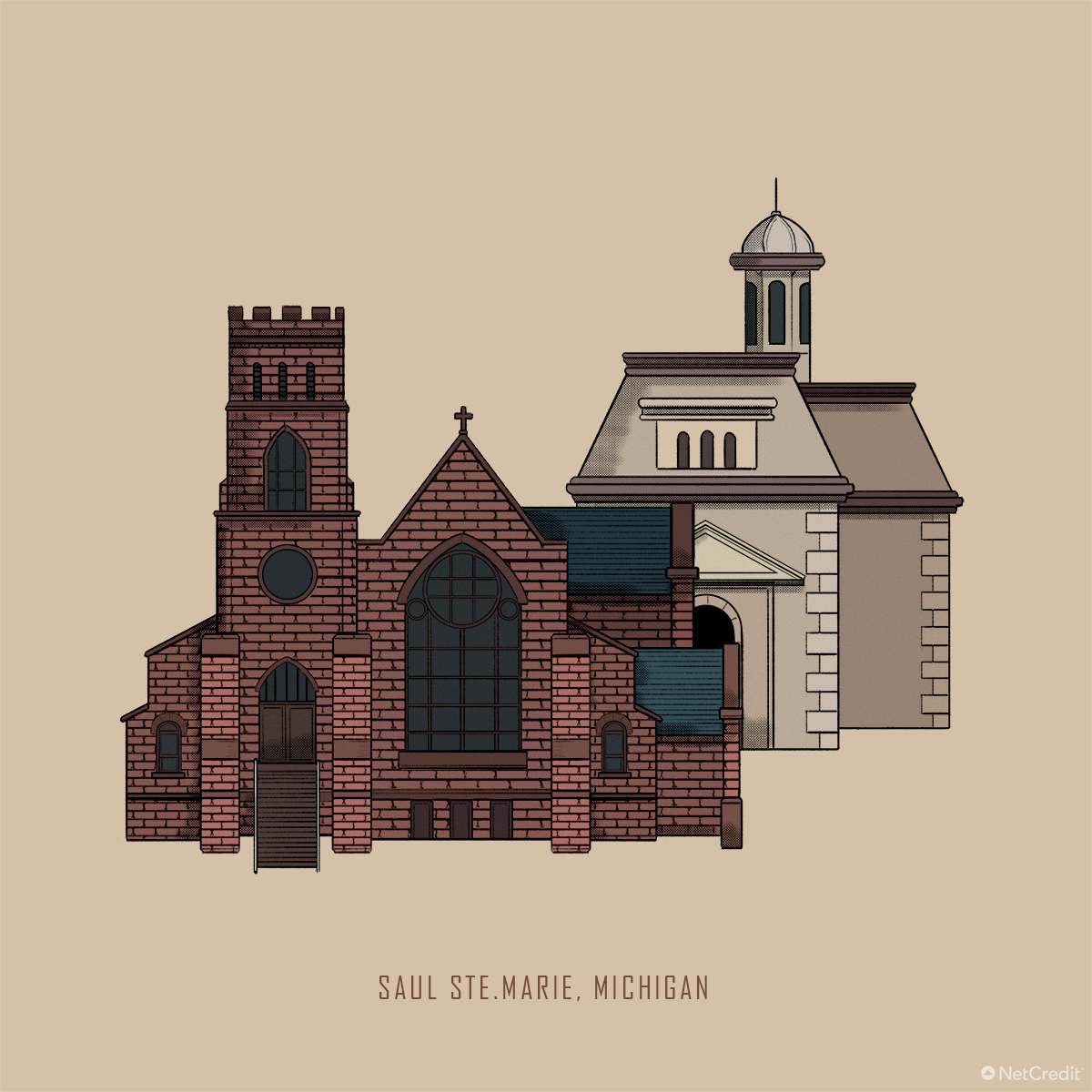
Michigan’s oldest town traces its name to its establishment by French missionary Jacques Marquette in 1668; Europeans had been settled on that land for over a quarter of century by that point. The town would grow to be commonly known in English as “The Soo,” which is more or less how to pronounce the French word “Sault.”
13. Annapolis, Maryland — 1649
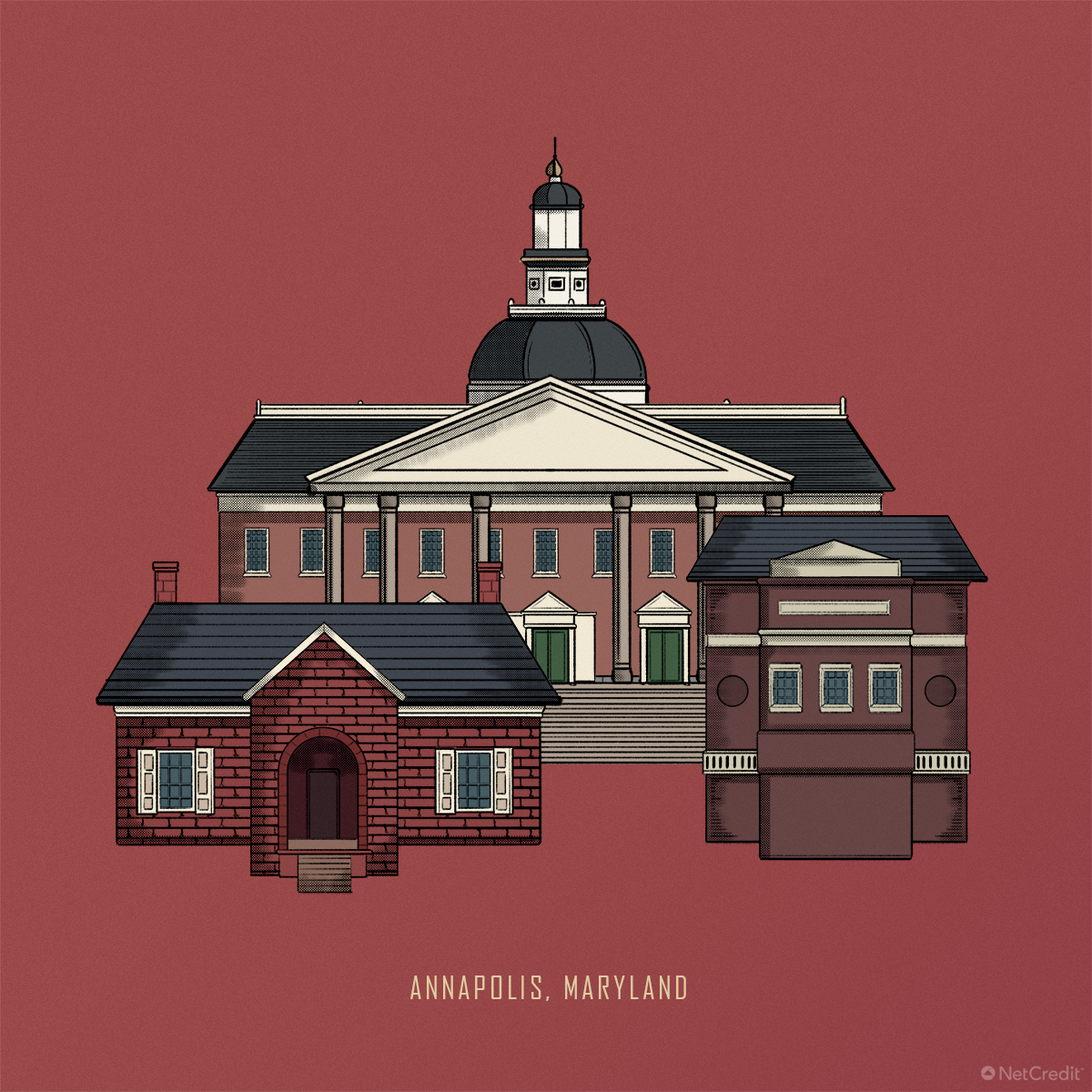
The “Athens of America,” Annapolis was a booming social and cultural hotspot from its beginnings as a settler capital. It even has a European-style street layout rather than a grid, in deference to the English Queen Anne for whom the city is named.
14. Jersey City, New Jersey — 1660
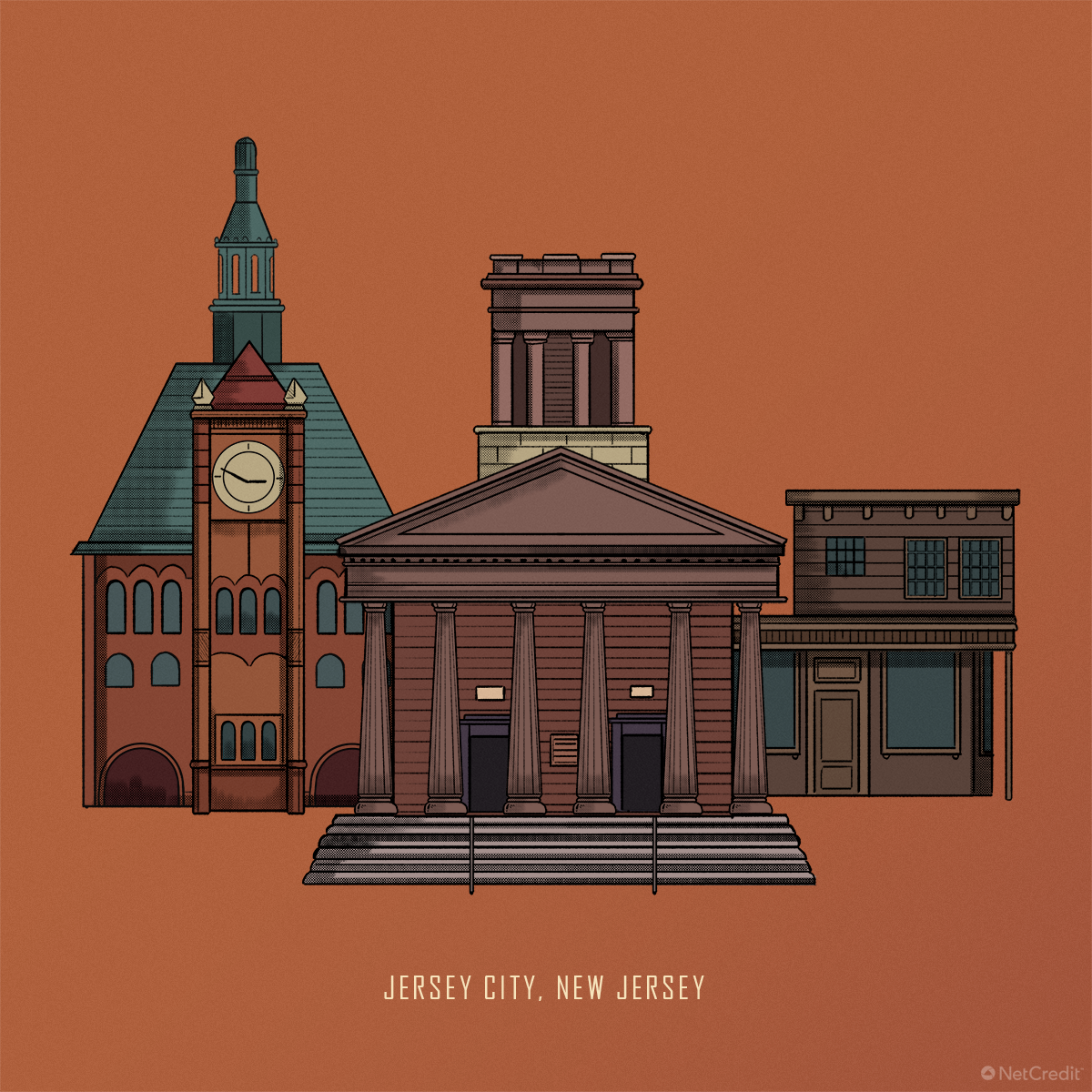
Delaware Indians have lived in this area for at least 10,000 years, but Dutch, Swedish and Finnish colonists arrived in the seventeenth century when Henry Hudson claimed it as ‘New Netherlands.’ Jersey City sprouted from the first village around Bergen Square.
15. Charleston, South Carolina — 1670
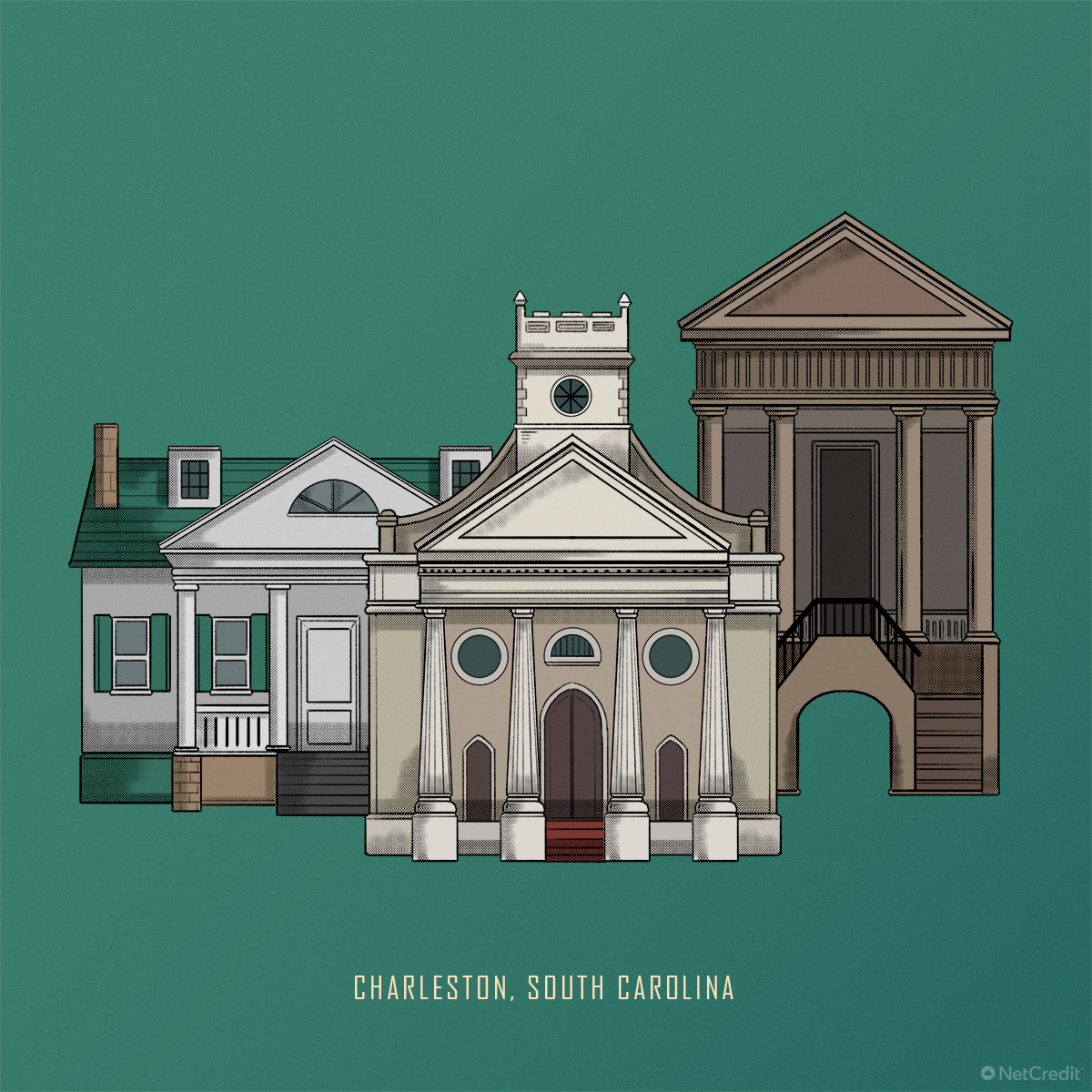
Charleston is a veritable hotbed of American history, regardless of its being South Carolina’s oldest town: it’s where the first ‘official’ shot of the civil war was fired, the first successful submarine attack happened, she-crab soup was invented, and America’s first golf course, museum and playhouse were sited.
16. Peoria, Illinois — 1680
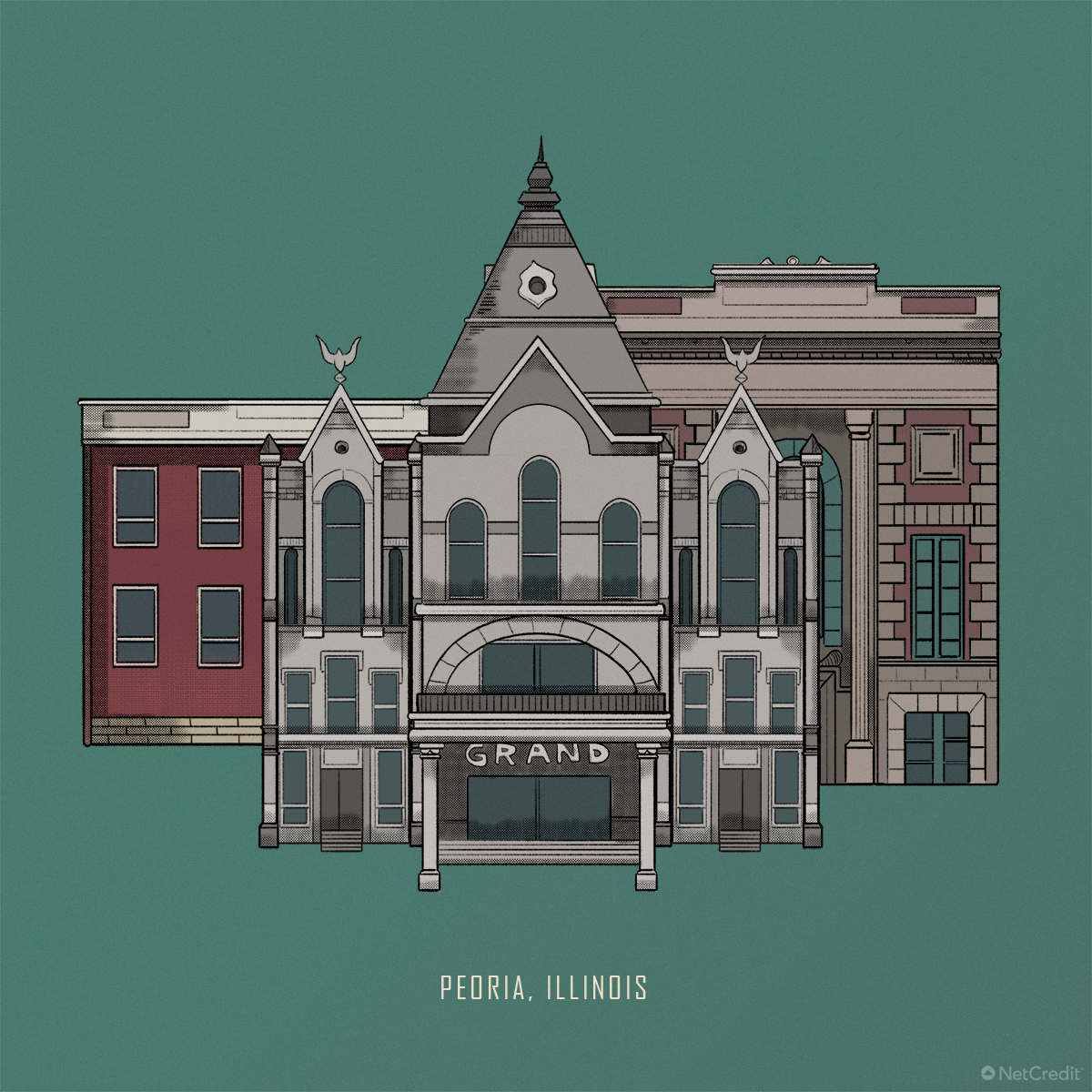
The Peoria Indians were one of five Illinois tribes who lived in this area long before the immigrants came. French colonists and Native Americans lived in settlements around the lake until 1812, when U.S. troops burned much of the village and moved the French to other areas.
17. Philadelphia, Pennsylvania — 1681
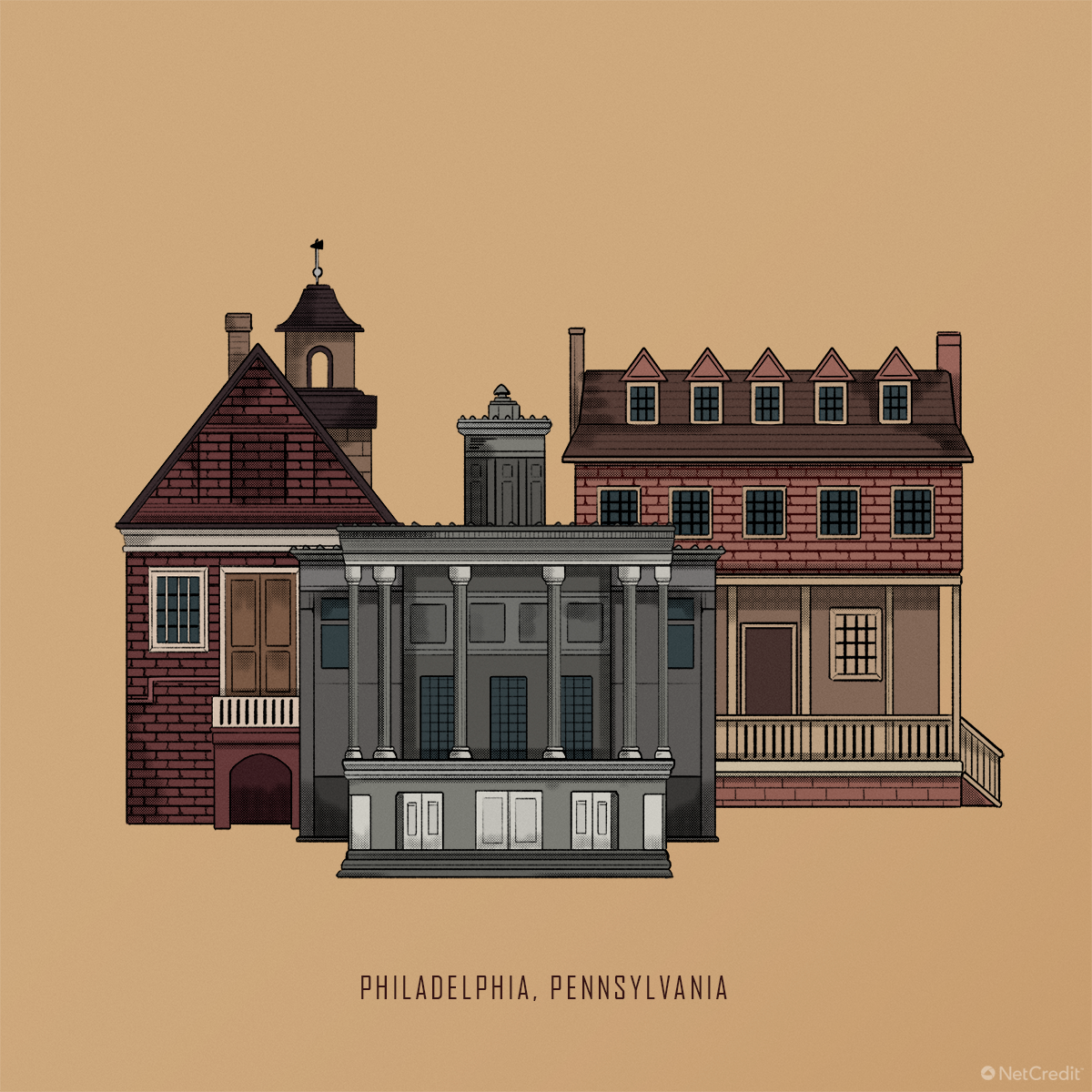
Philadelphia was a Quaker town, founded by William Penn when King Charles II gave him the province of Pennsylvania – the “brotherly love” reflecting Penn’s ideals. Religious tolerance and a democratic approach soon gave the city a good name, and numbers swelled to make it one of the most important cities in the land.
18. Mobile, Alabama — 1702
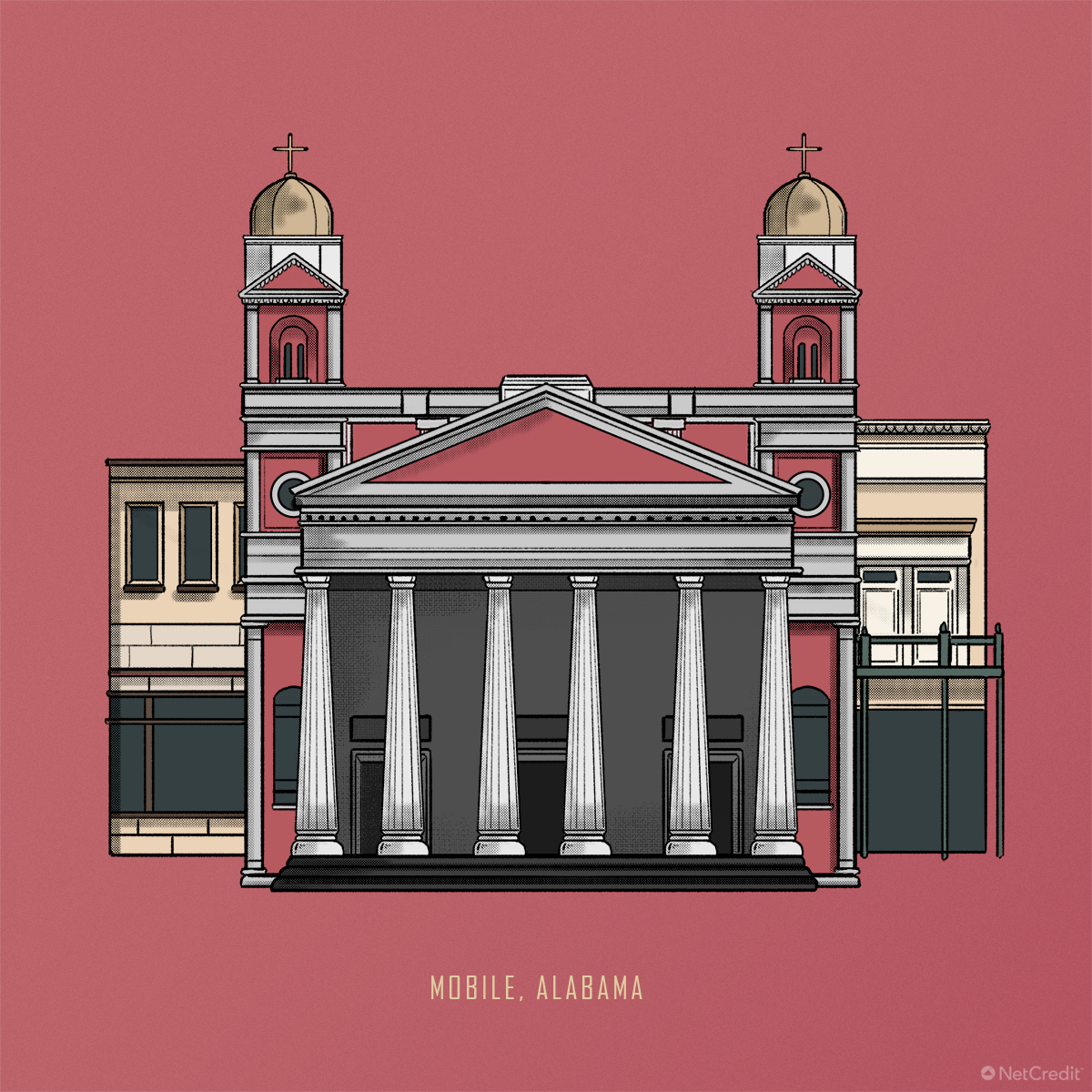
The first capital of French Louisiana, Mobile even had its own language for the first century or so — a trading language between the French and Native Americans, known as Mobile Jargon. Along the way, the town passed through French, English and Spanish control as a result of local and remote wars.
19. Bath, North Carolina — 1705
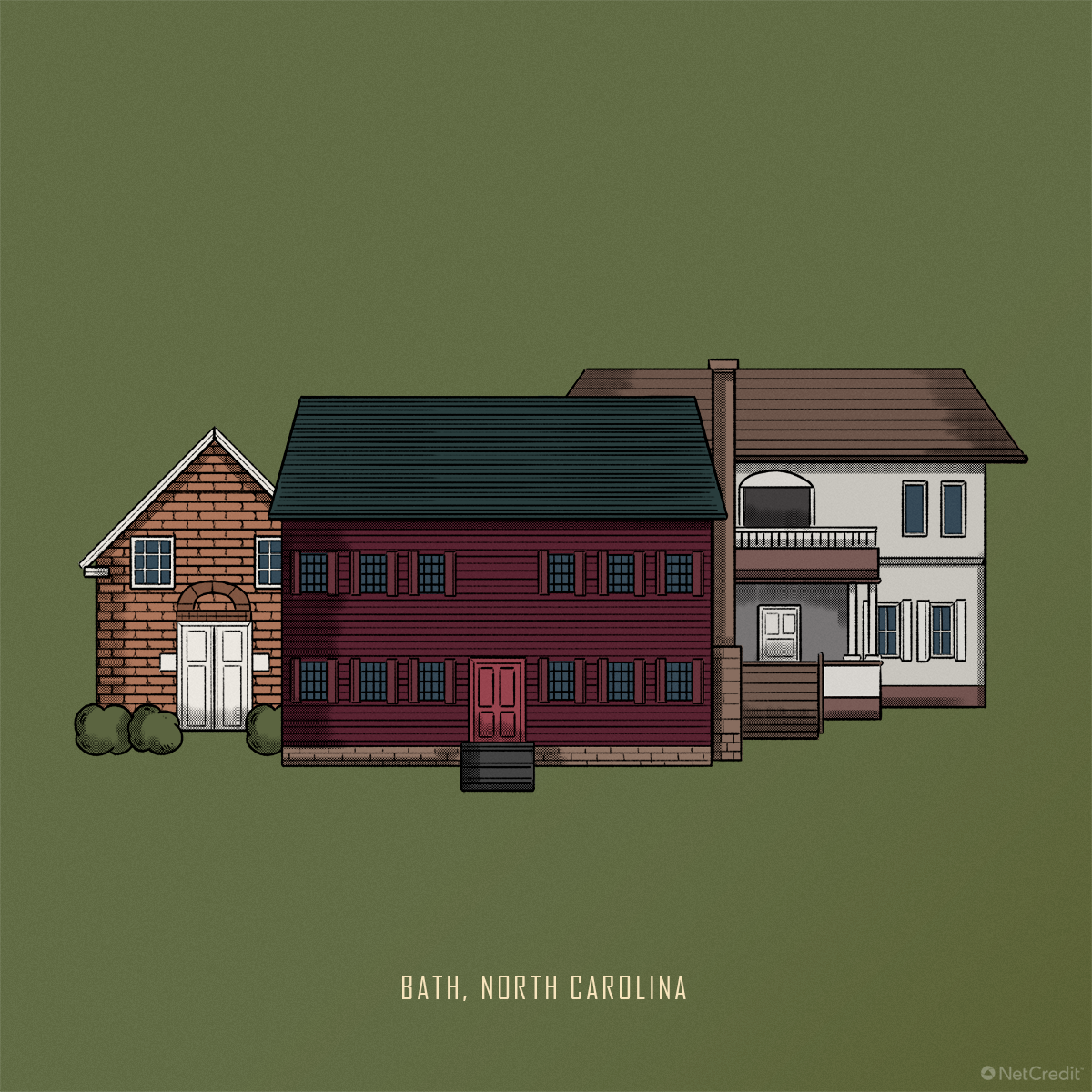
French Protestants settled here from Virginia, lured by access to the river and, by extension, the Atlantic just 50 miles away. However, this early promise soon turned sour as proximity to the sea meant trouble with pirates. Additionally, the Tuscarora Indians — who suffered enslavement and disease at the hands of their invaders — waged a four-year war with the Europeans, bringing terrible bloodshed to the town before Bath was even ten years old.
20. Natchitoches, Louisiana — 1714
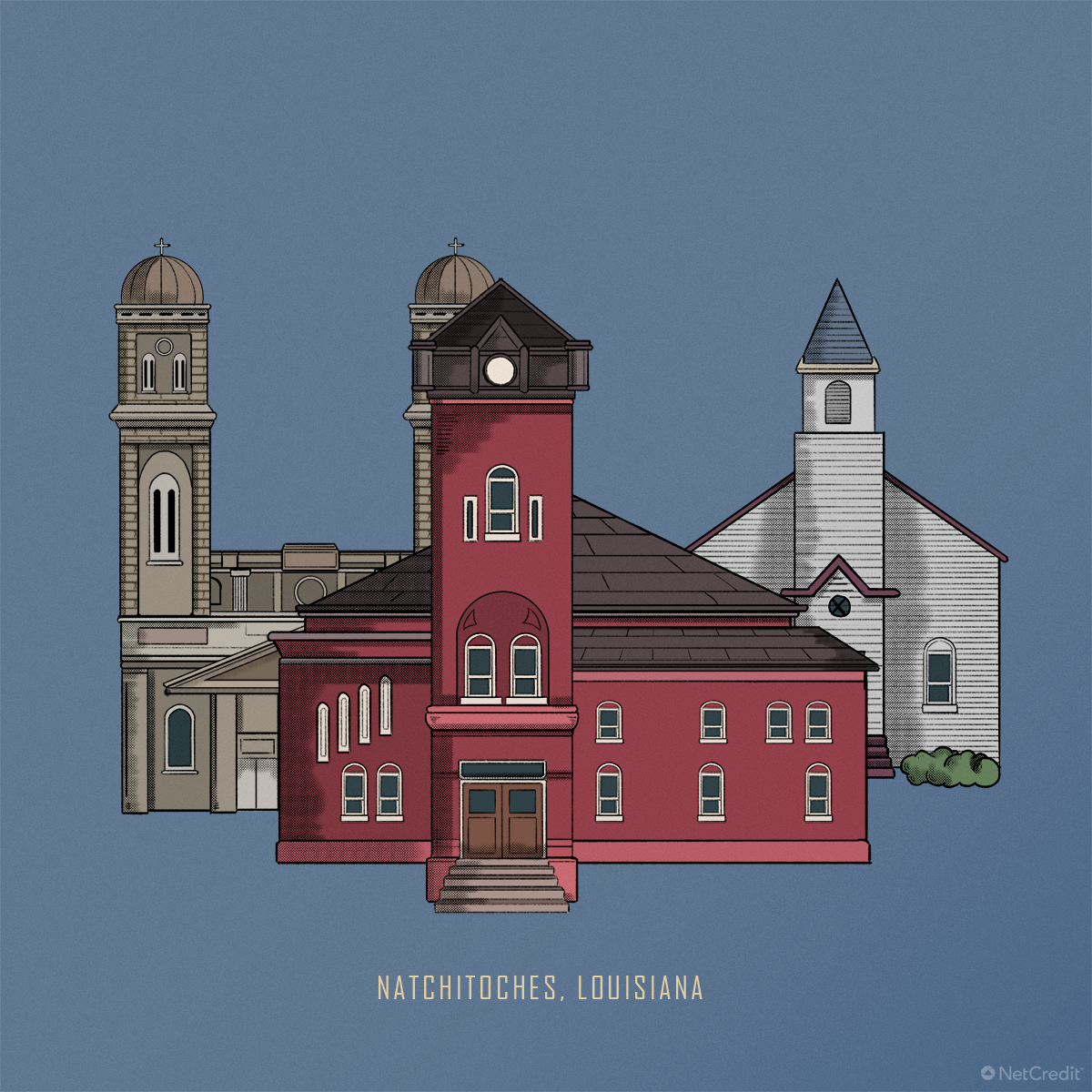
Natchitoches was built just four years ahead of nearby New Orleans, so it is no surprise that parts of the respective towns closely resemble each other. It began as a mere outpost from which the French could keep an eye on challenges to their territory along the Red River.
21. Natchez, Mississippi — 1716
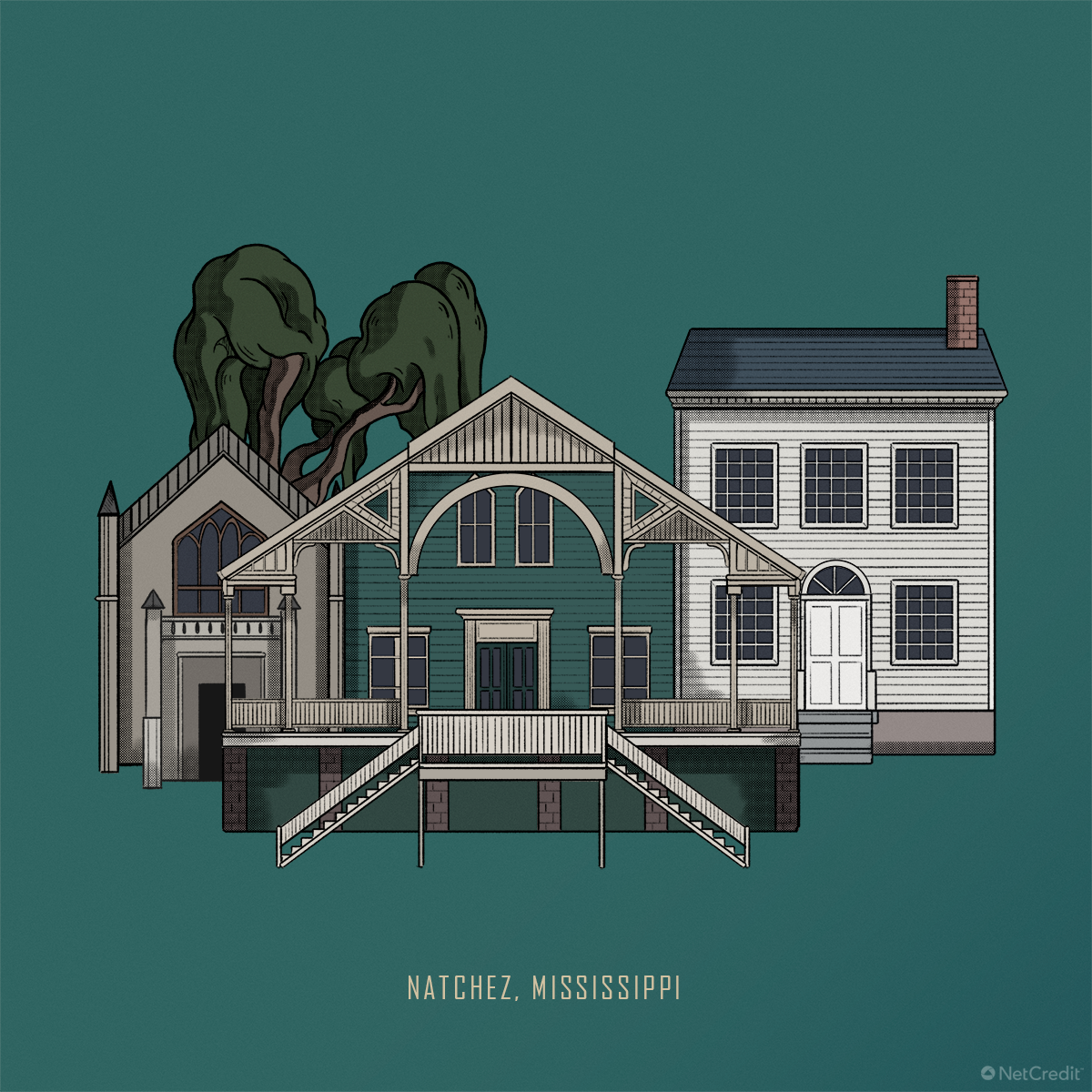
The oldest city on the Mississippi River was founded by the French in 1716 and later ceded to the Spanish. Sadly, the fortunes of Natchez are founded on its status us a slave-trading hub serving the nearby cotton and sugarcane empires.
22. Vincennes, Indiana — 1732
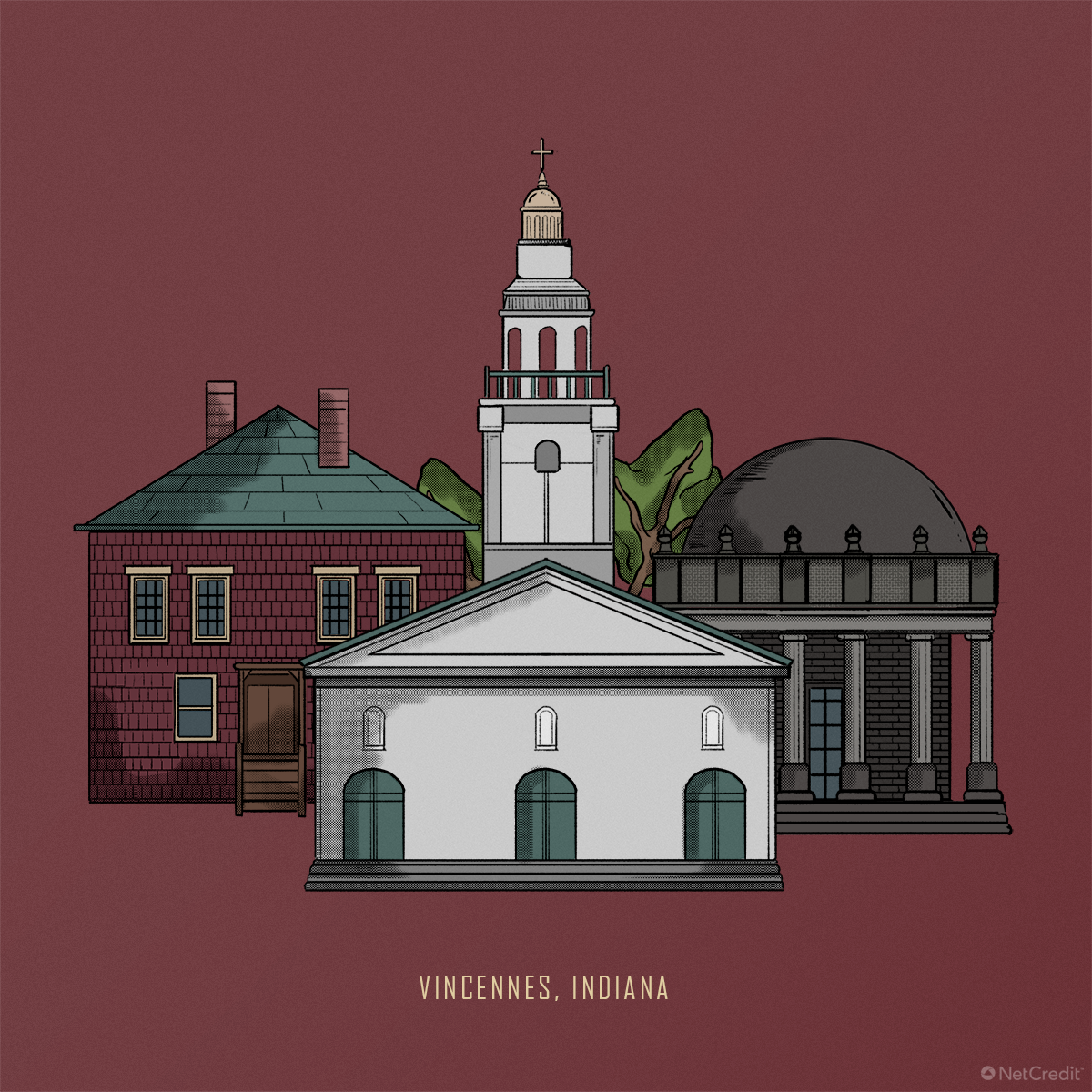
Vincennes was established by Francois Marie Bissot–Sieur de Vincennes to protect the thriving local fur trade from the British. Along the way, the town became home to Indiana’s first bank, first Presbyterian and Catholic churches, first newspaper and first Masonic Lodge.
23. Savannah, Georgia — 1733
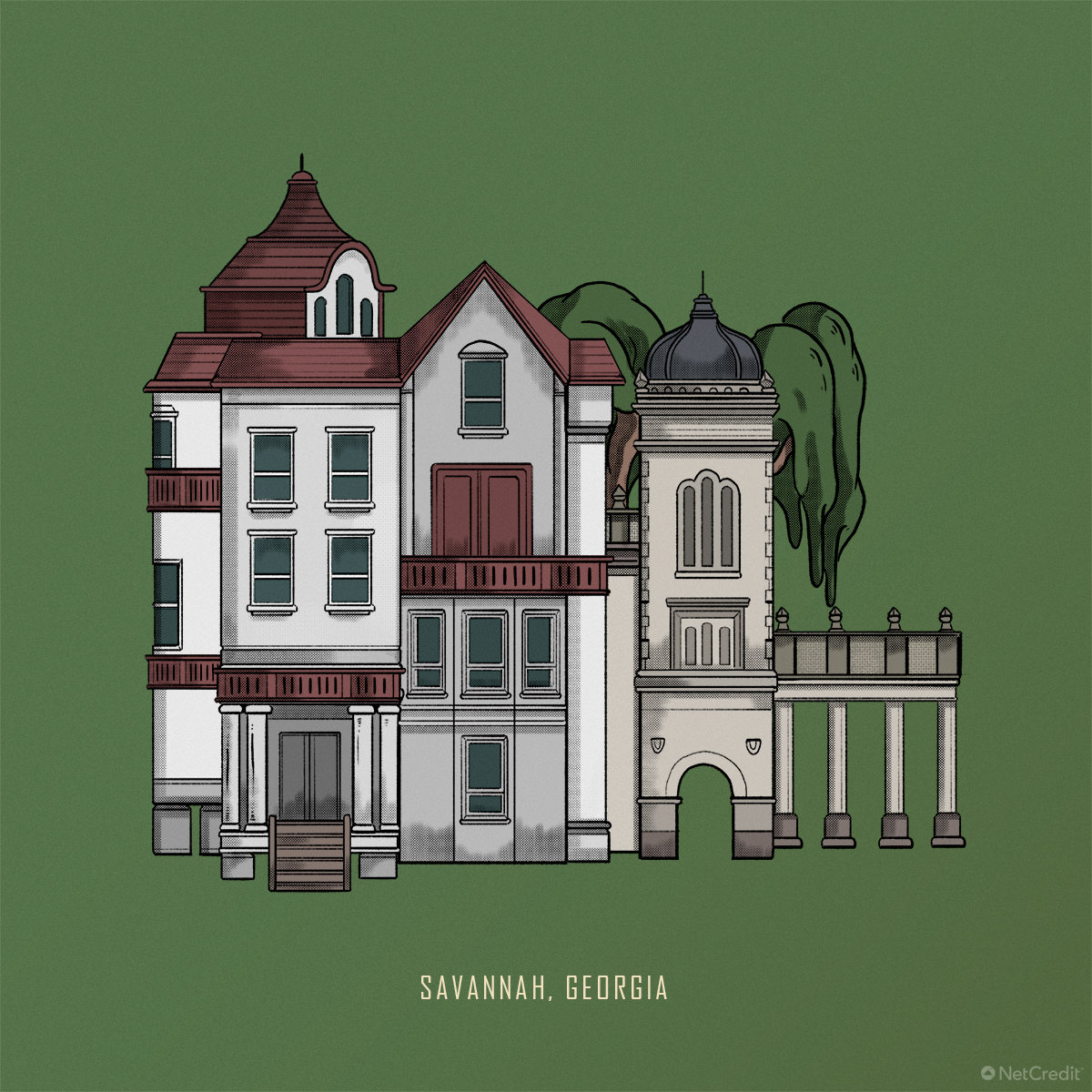
Most of the towns that emerged before Savannah were informal developments of forts or chance settlements, but Georgia’s oldest town was purposely designed as a founding stone of the state. It became known as ‘America’s first planned city’ for its meticulous grid of streets, buildings, parks and meeting places.
24. Westminster, Vermont — 1734
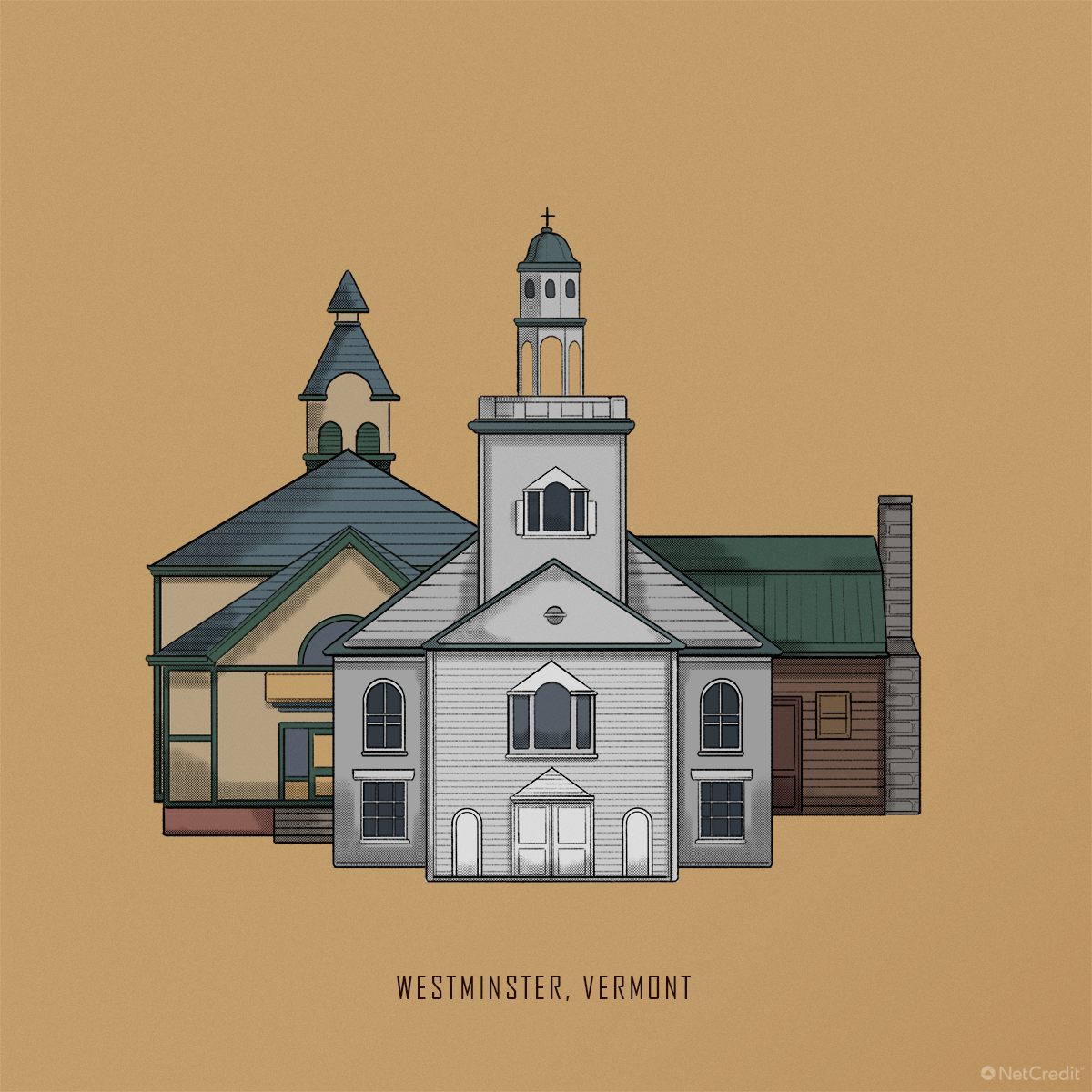
So fundamental was Westminster to Vermont that it first appeared in records as ‘Township No. 1.’ However, the town has flipped between various counties over the years due to its position on Connecticut River and in Cumberland County.
25. Saint Genevieve, Missouri — 1735

The original settlement of Sainte Genevieve was, with some foresight, named Le Vieux — or “the Old” — Village, but its precise location shifted slightly after flooding in 1835. Floods again threatened the historic center in 1993 and 1995, but improvised levees were constructed and most of the older buildings were saved.
26. Fort Pierre, South Dakota — 1743
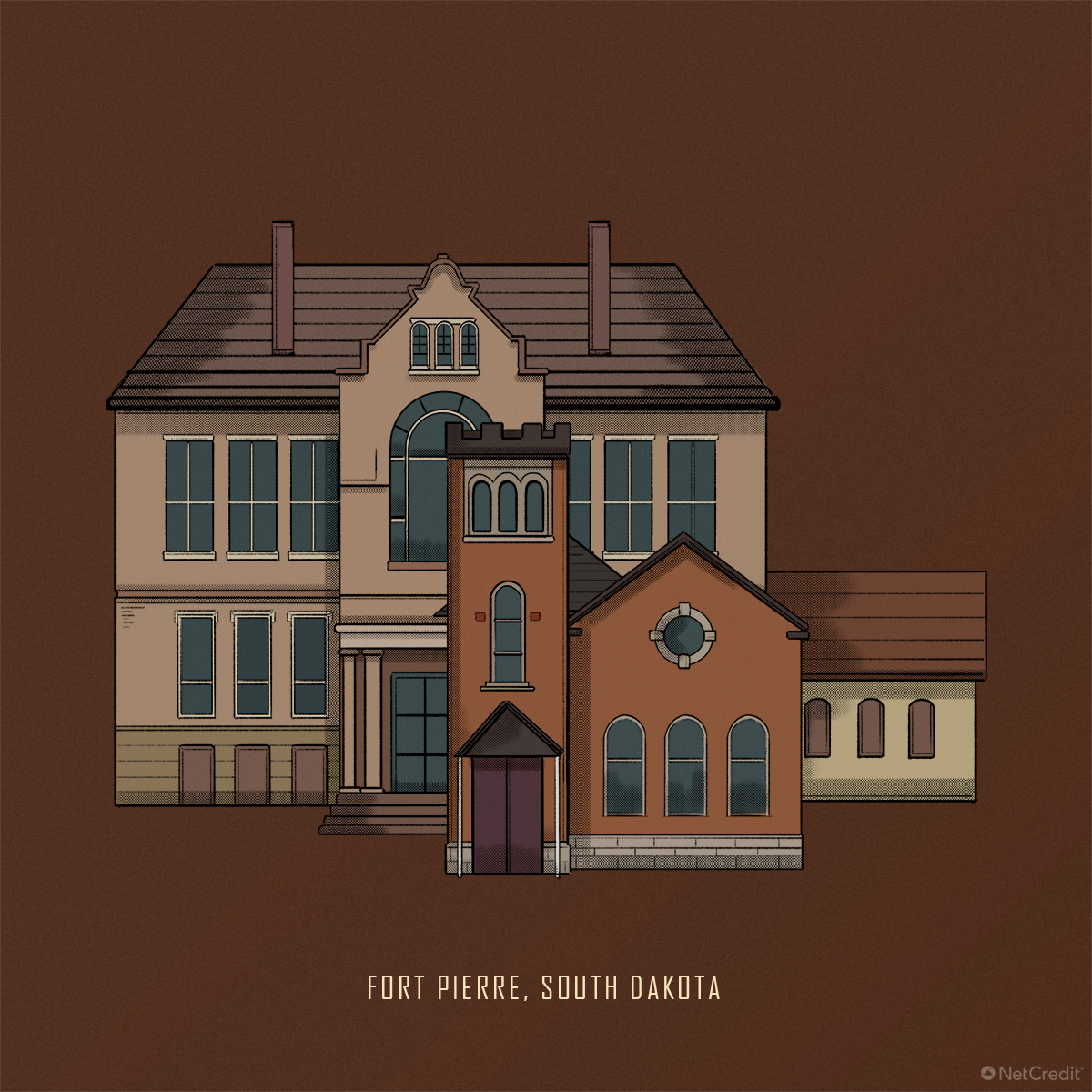
Fort Pierre became a thriving fur trade town soon after its establishment, with one 1880 visitor describing its population as “. . . a strange mixture of Americans, English, Irish, Swedes, Norwegians, Russians, Poles, French, Canadians, half-breeds, Indians and what not… Protestants, Catholics, Spiritualists, Moralists, Liberals, Freelovers, Ingersolites, Nothing-arins, and how many others I do not know… Nearly all the people were in hot and eager pursuit after the almighty dollar!”
27. Shepherdstown, West Virginia — 1762
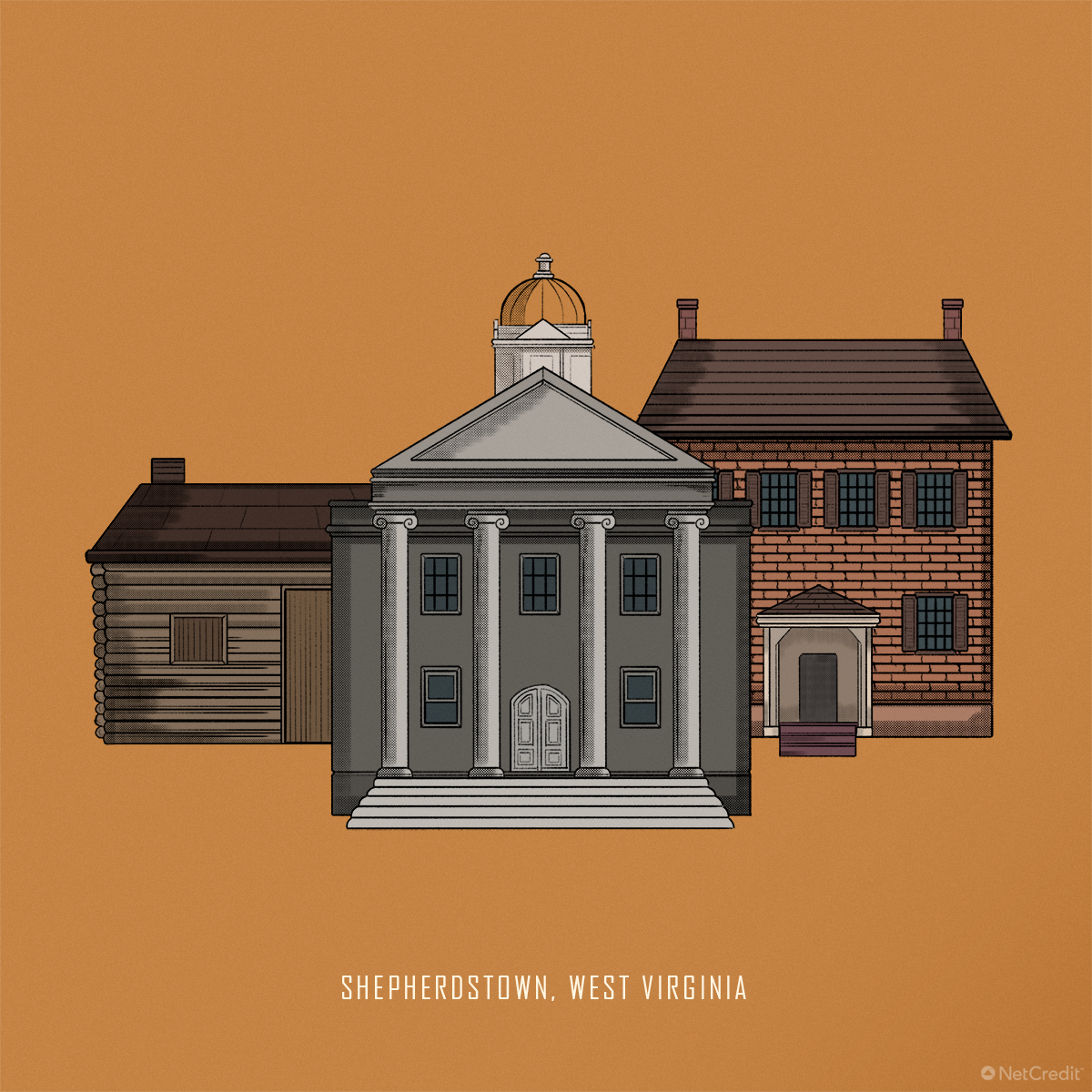
Thomas Shepherd took a land grant for a patch by the Potomac River in 1734 and, in the years leading to the town’s official establishment, the settlement there took wonderful Wild West names such as Pack Horse Ford and Swearingen’s Ferry. It later became Shepherd’s Town and, after the civil war, Shepherdstown.
28. San Diego, California — 1769
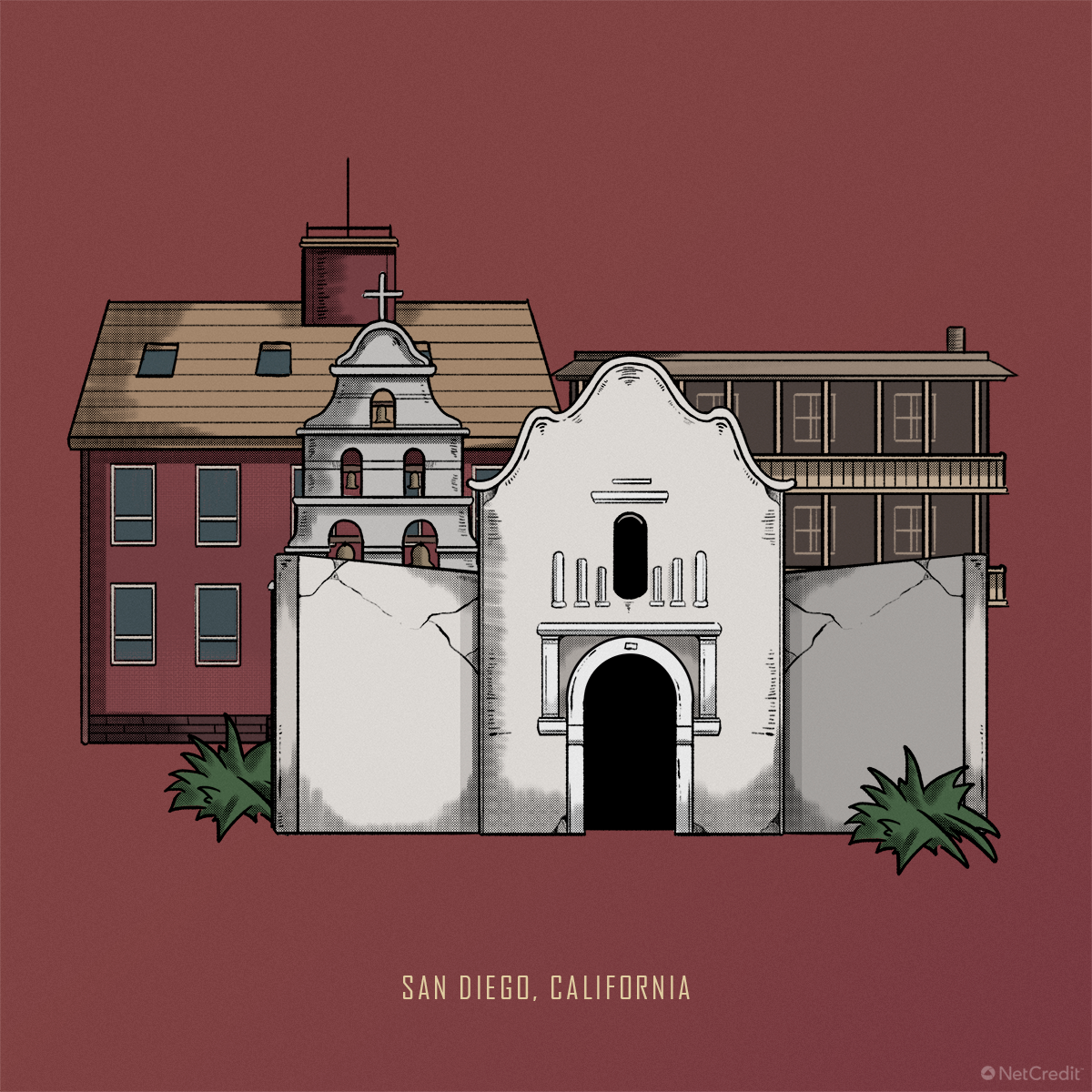
For thousands of years, this area belonged to San Dieguito and Diegueño Indians. Although the Spanish claimed the area in the mid-sixteenth century, it wasn’t until two centuries later that missionaries arrived and the Old Town became the first Spanish settlement on the West Coast.
29. Harrodsburg, Kentucky — 1774
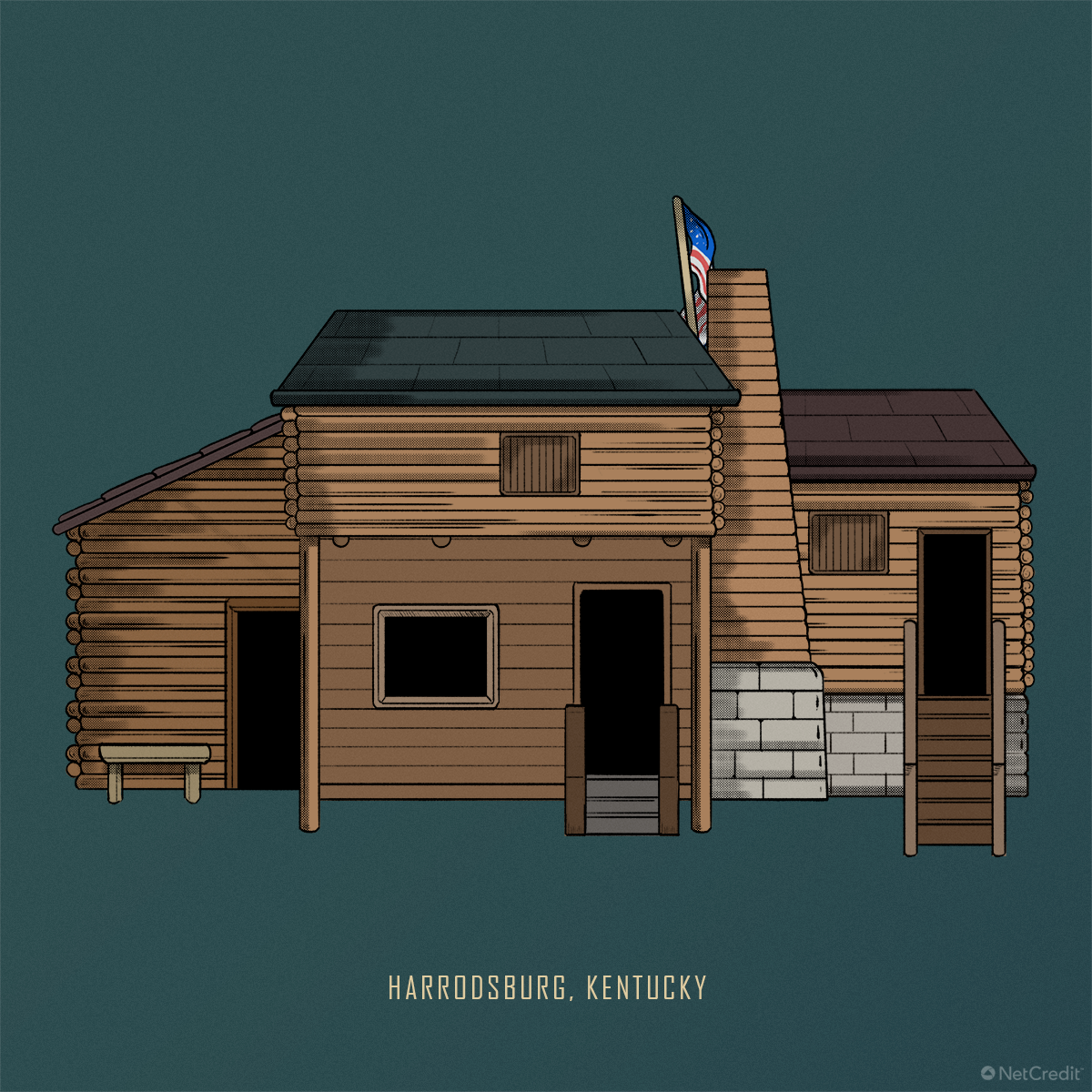
The explorer and soldier James Harrod took 30 men to the area near the Salt and Kentucky Rivers in 1774 and divided the land between them. Today, it has become a quaint little old town with a population of not much over 8,000 people; both the living areas and the preserved historical spots retain that frontier look.
30. Tucson, Arizona — 1775
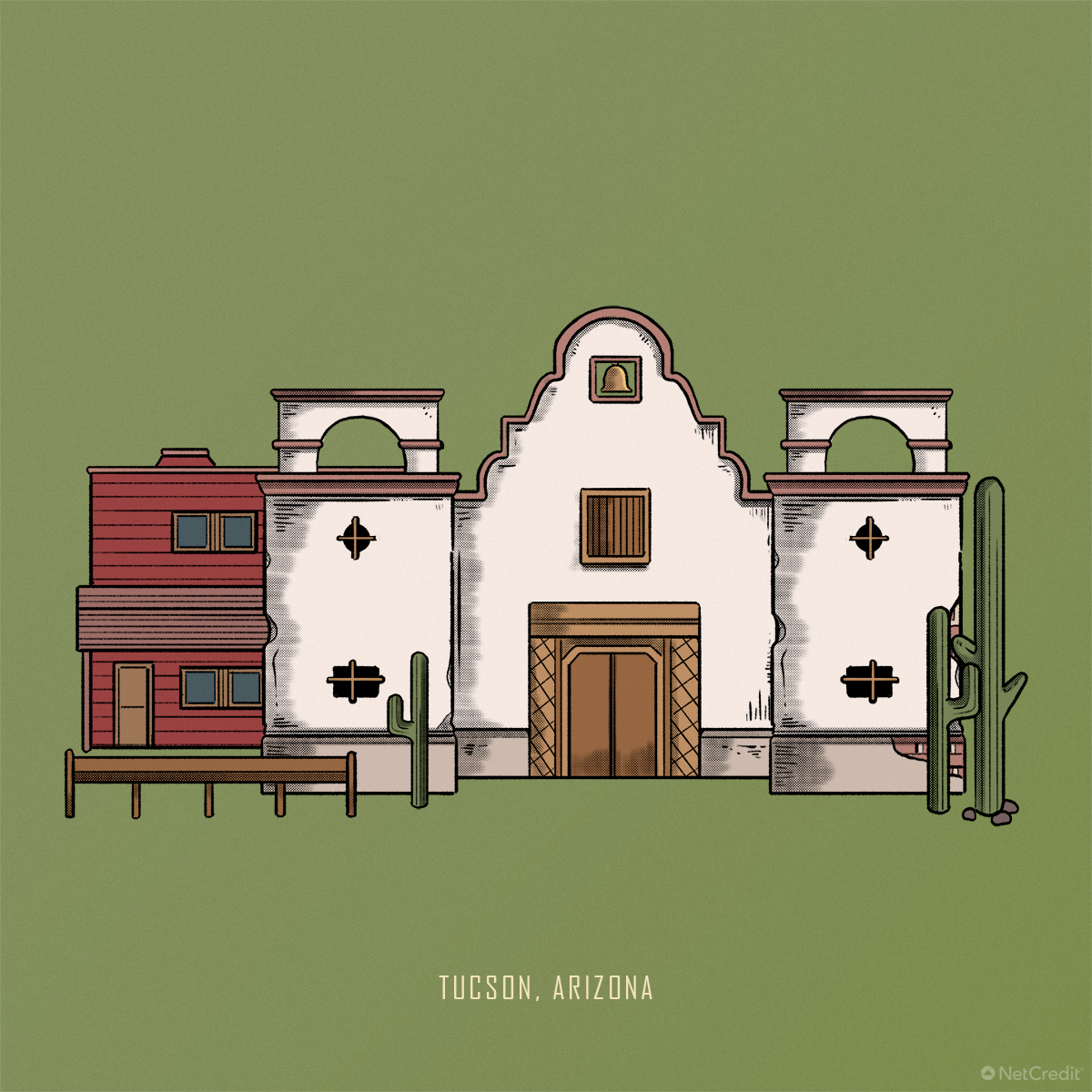
‘El Presidio San Agustin del Tucson’ was founded as a walled fort by Hugo O’Conor in 1775, although Native Americans lived in the area for more than twelve millennia beforehand. Missionary work intended to convert and subdue the locals often led to rebellions by tribes such as the Pima Indians in 1751.
31. Jonesborough, Tennessee — 1779
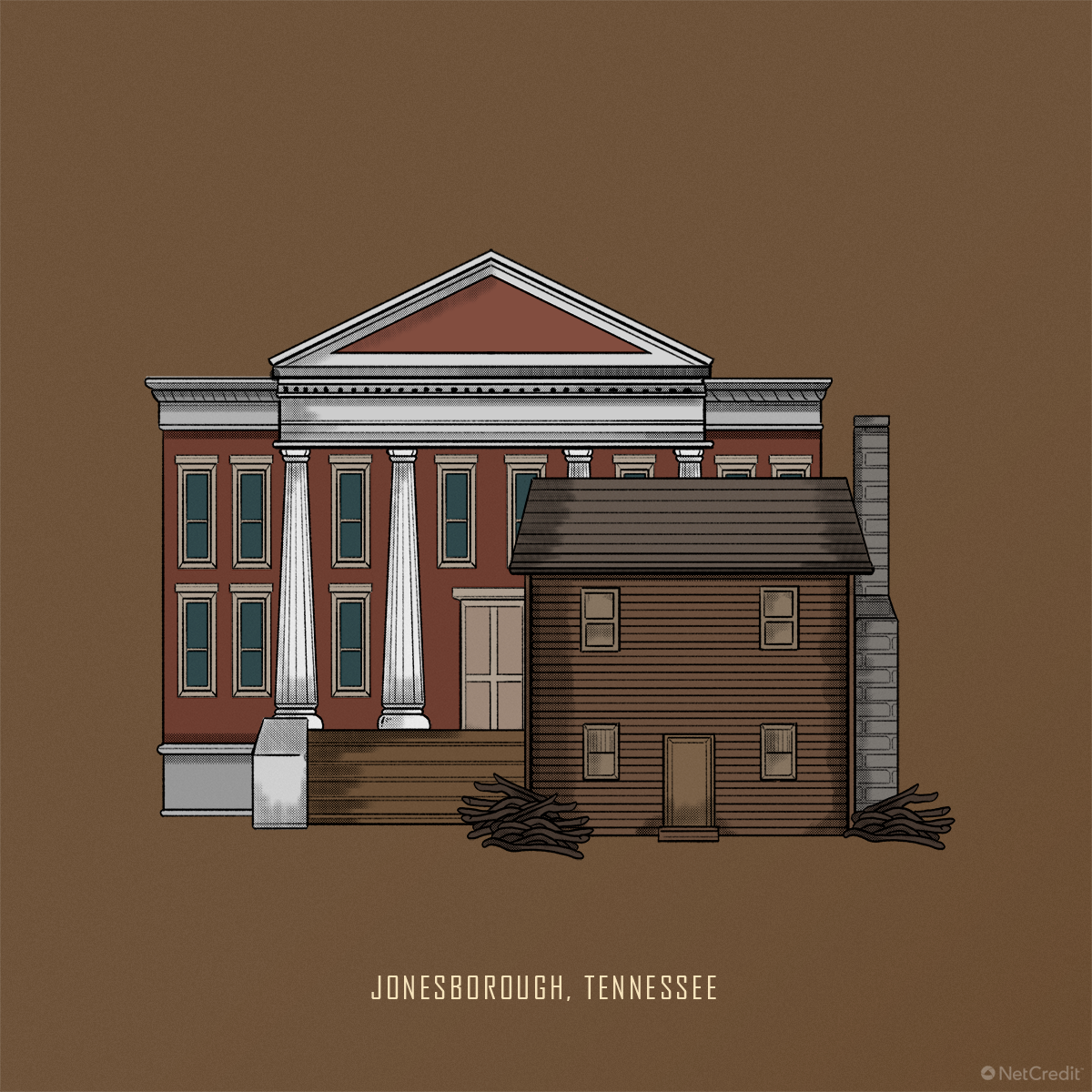
Jonesborough was formed 17 years before Tennessee became a state – it was under the control of North Carolina at the time and briefly became the capital of the unofficial fourteenth ‘State of Franklin’ along the way. Today, many historical buildings are still in use, making it a town of ‘living’ history.
32. Nacogdoches, Texas — 1779

Time hasn’t stood still in Nacogdoches. Previously occupied by Caddo Indians, the area has passed beneath nine different flags since the Spanish missions arrived – three more than the rest of Texas: Spanish, French, Gutierrez-Magee Rebellion, Dr. James Long Expedition, Mexican, Fredonian Rebellion, Lone Star, Confederate Stars & Bars and the United States.
33. Marietta, Ohio — 1788
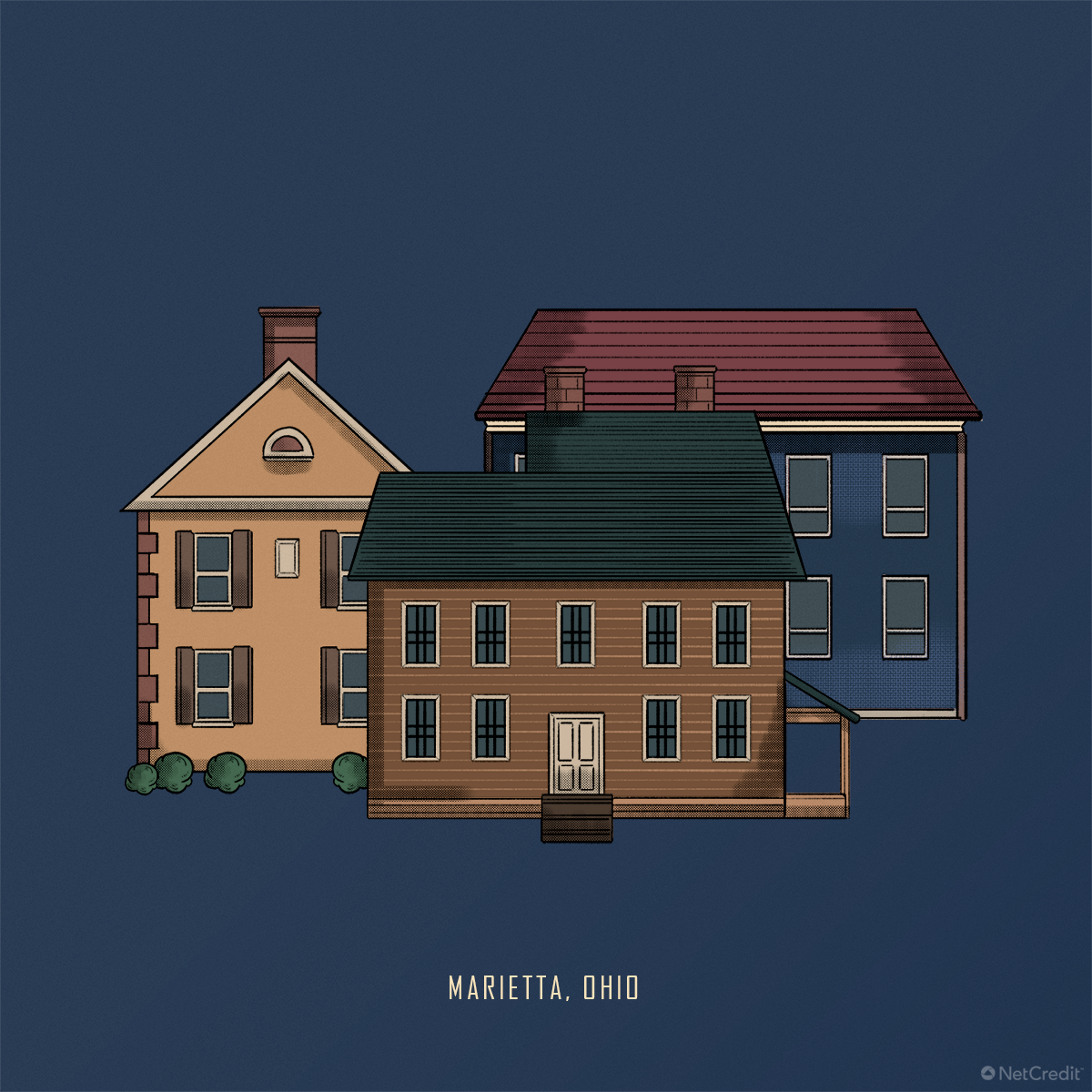
The “Adventure Galley” landed at the joining of the Muskingum and Ohio Rivers on April 7, 1788, where General Rufus Putnam and 47 pioneers established the first permanent colony northwest of the Ohio River.
34. Georgetown, Arkansas — 1789
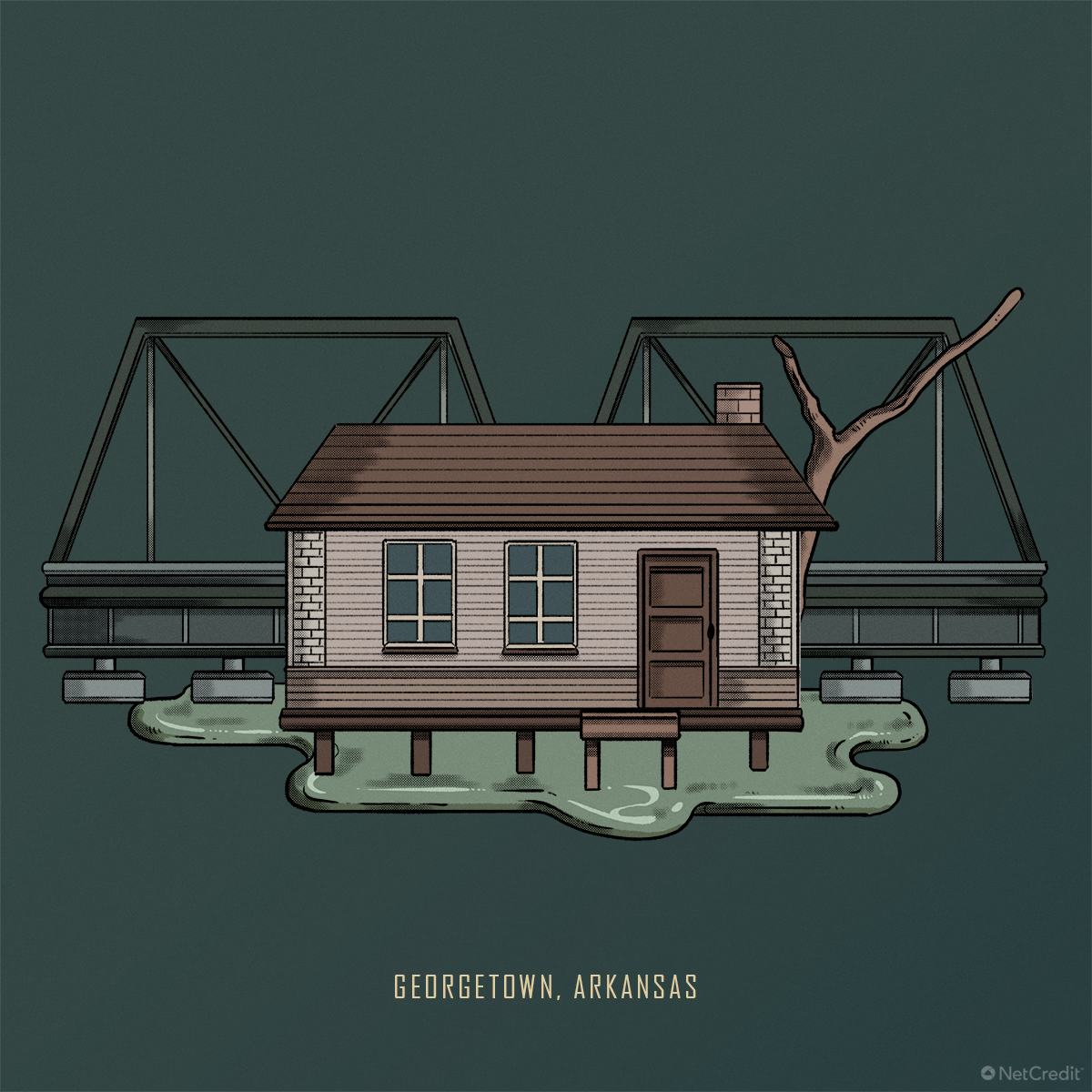
Just 126 people live in Georgetown today — keeping it alive as the oldest continuously inhabited settlement in Arkansas. And no, they are not all called George. George was the surname of three men who bought and redeveloped the town some decades after it was founded.
35. Kodiak, Alaska — 1792
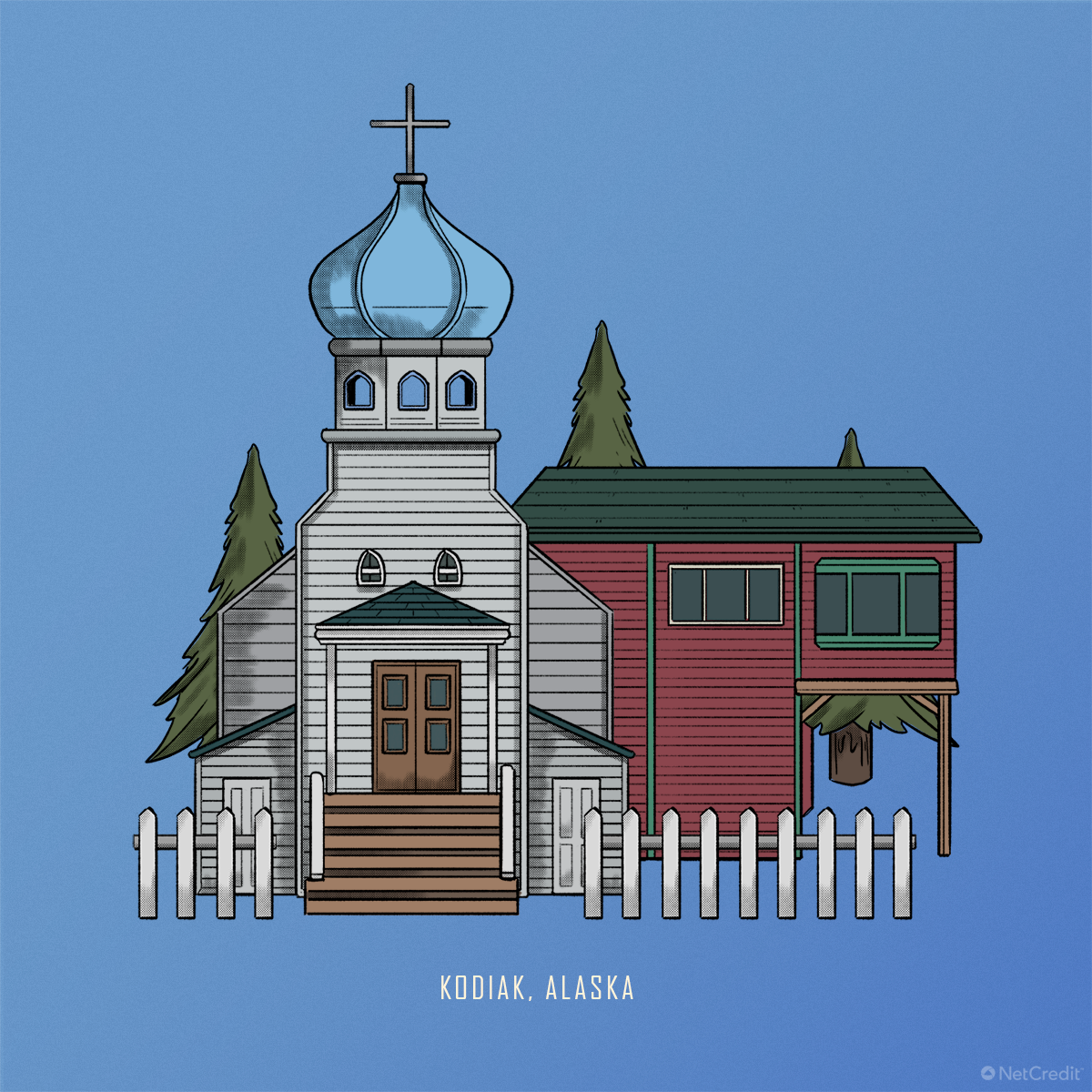
The first capital of Russian Alaska, Kodiak was established by Russian fur hunters and traders keen to exploit the North Sea otter. Today, the city is one of the largest fishing ports in the United States.
36. Pembina, North Dakota — 1797
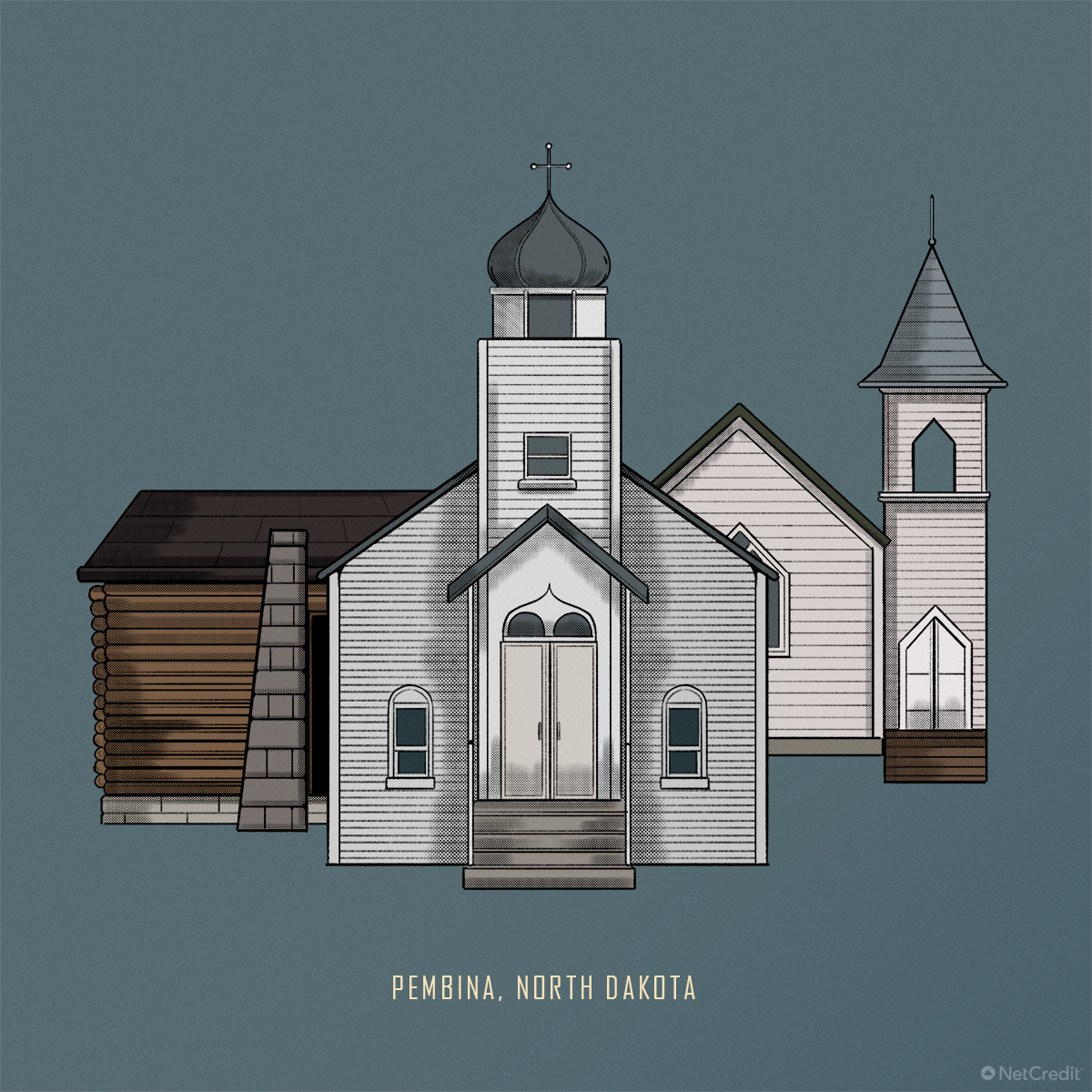
Pembina was first inhabited by Chippewa Indians. When the French began to arrive in the late eighteenth century they intermarried with the Native Americans, forming a Métis — or mixed-blood — community. But it wasn’t until 1797 that Charles Baptiste Chaboillez established a trading post here and the settlement began to grow.
37. Astoria, Oregon — 1811
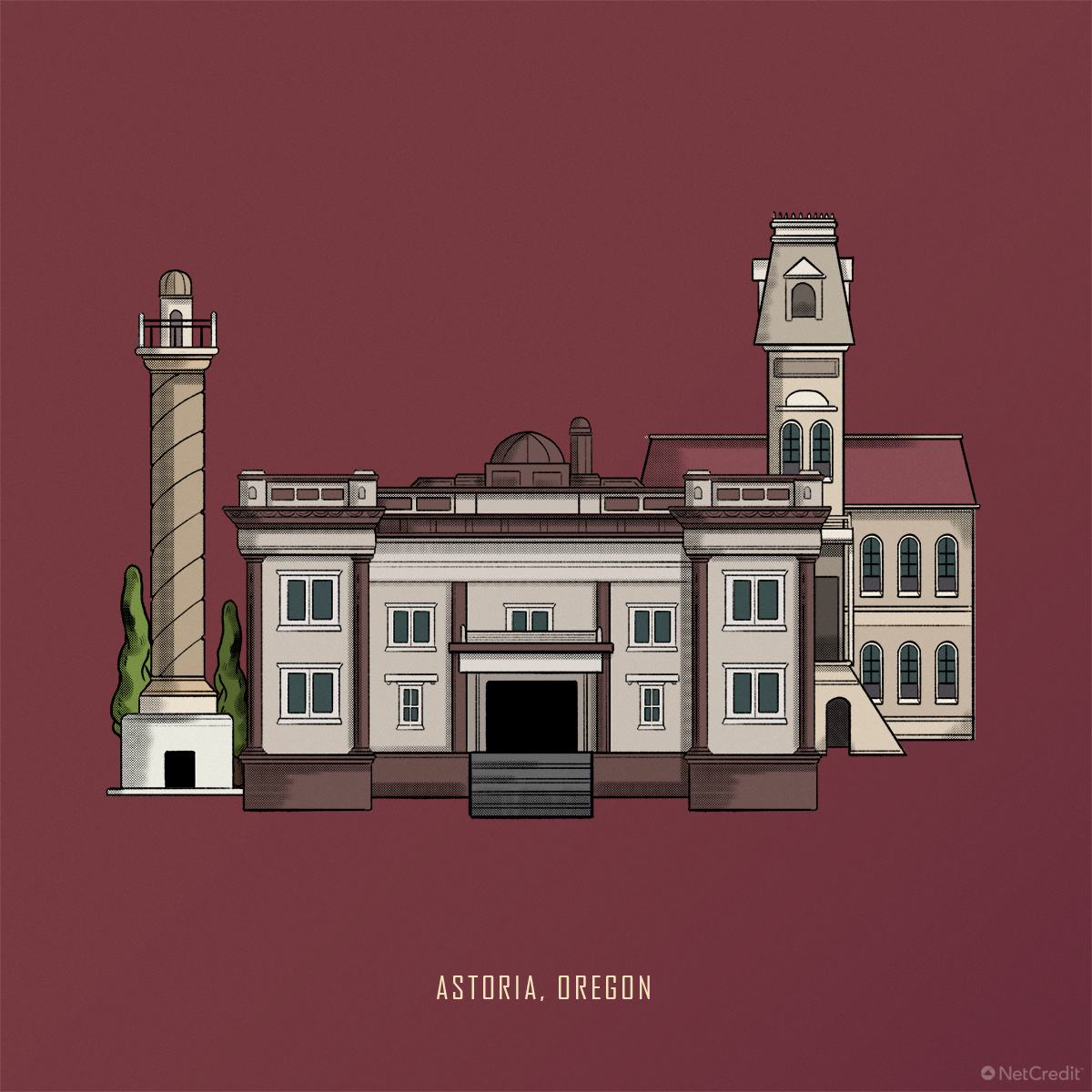
Astoria is named after America’s first millionaire, John Jacob Astor, who founded the town as a fur trading post. Of course, today it is most celebrated as the shooting location of 1980s classic The Goonies.
38. Hilo, Hawaii — 1822

Polynesians first arrived in Hilo nearly a thousand years ago, but it wasn’t until 1822 that Christian missionaries and European whalers and traders would appear.
39. Bellevue, Nebraska — 1822
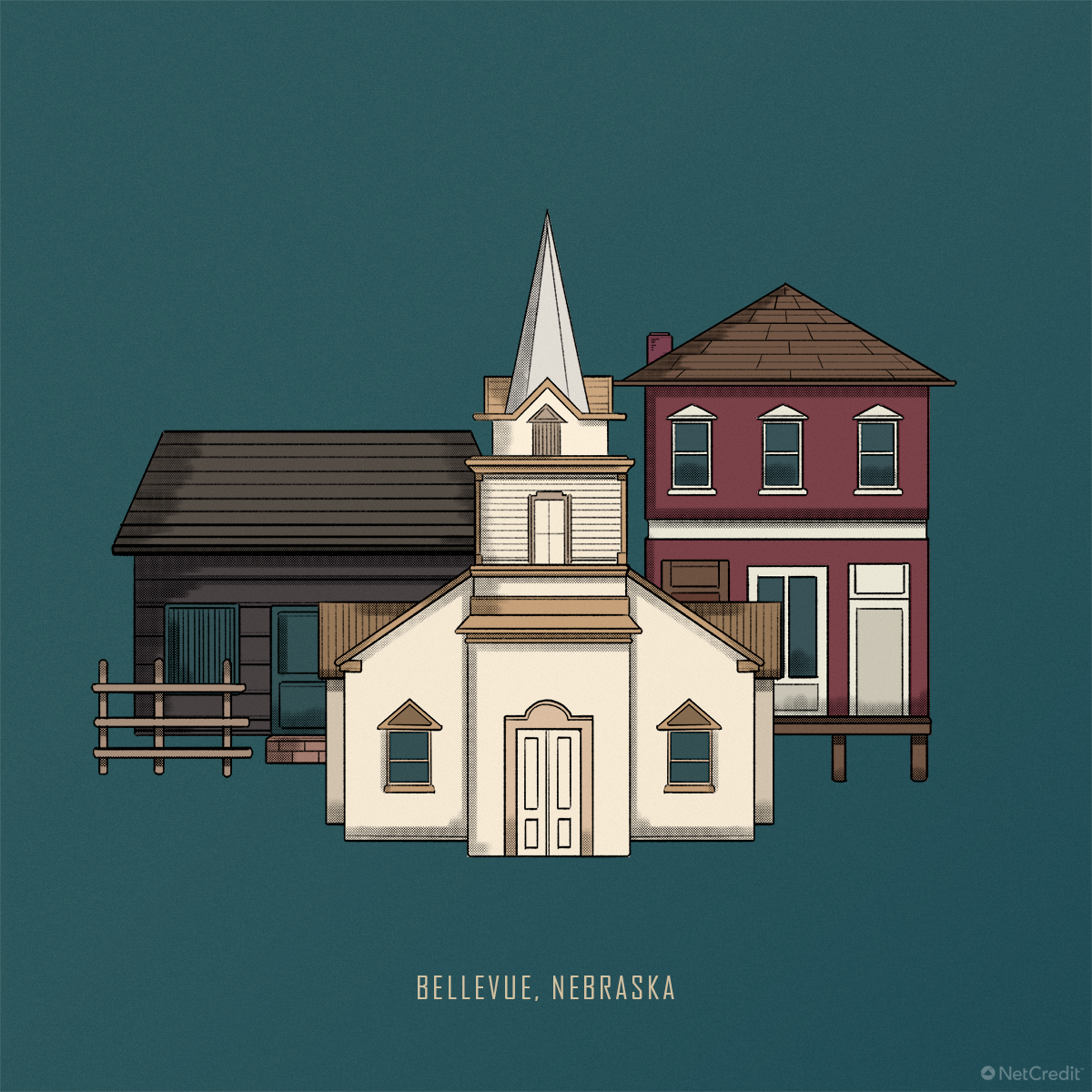
Bellevue — “beautiful view” — was relocated to cliffs over the Missouri River in 1835, where it thrived as a fur trading point between colonists and the local Omaha, Otoe, Missouri and Pawnee tribes.
40. Fort Gibson, Oklahoma — 1824
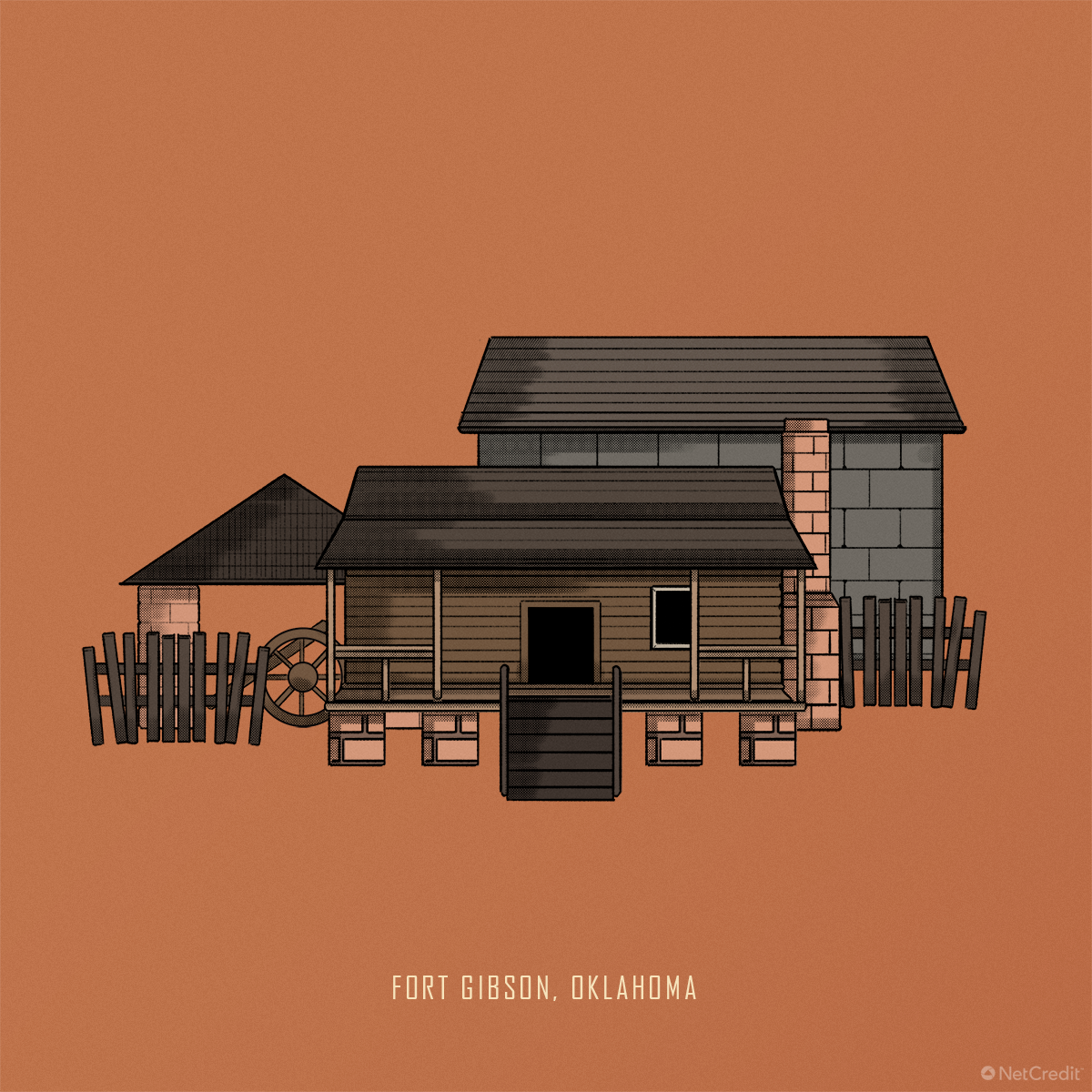
Original nineteenth century buildings still dot Fort Gibson, which grew from the settlement of military families, local Native Americans, and freed slaves. The fort had originally been established to protect both European and migrating Cherokee settlers from indigenous tribes such as the Osage Nation.
41. Wabasha, Minnesota — 1826
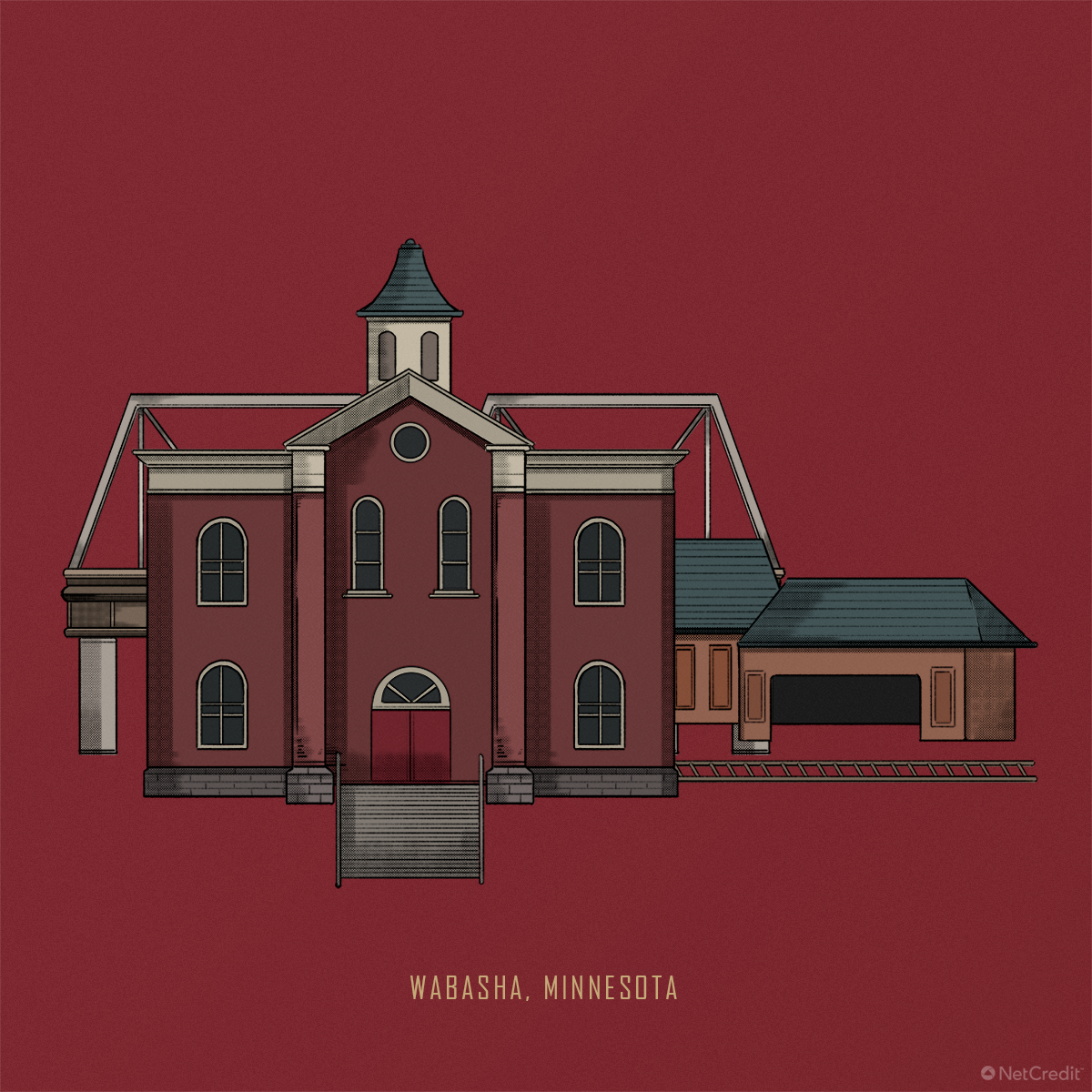
Before 1826, the area that became Wabasha was occupied by the Sioux. The nephew of Chief Wa-pa-shaw set up a trading place, and the town took his uncle’s name — becoming officially established in 1830, four years later.
42. Leavenworth, Kansas — 1827
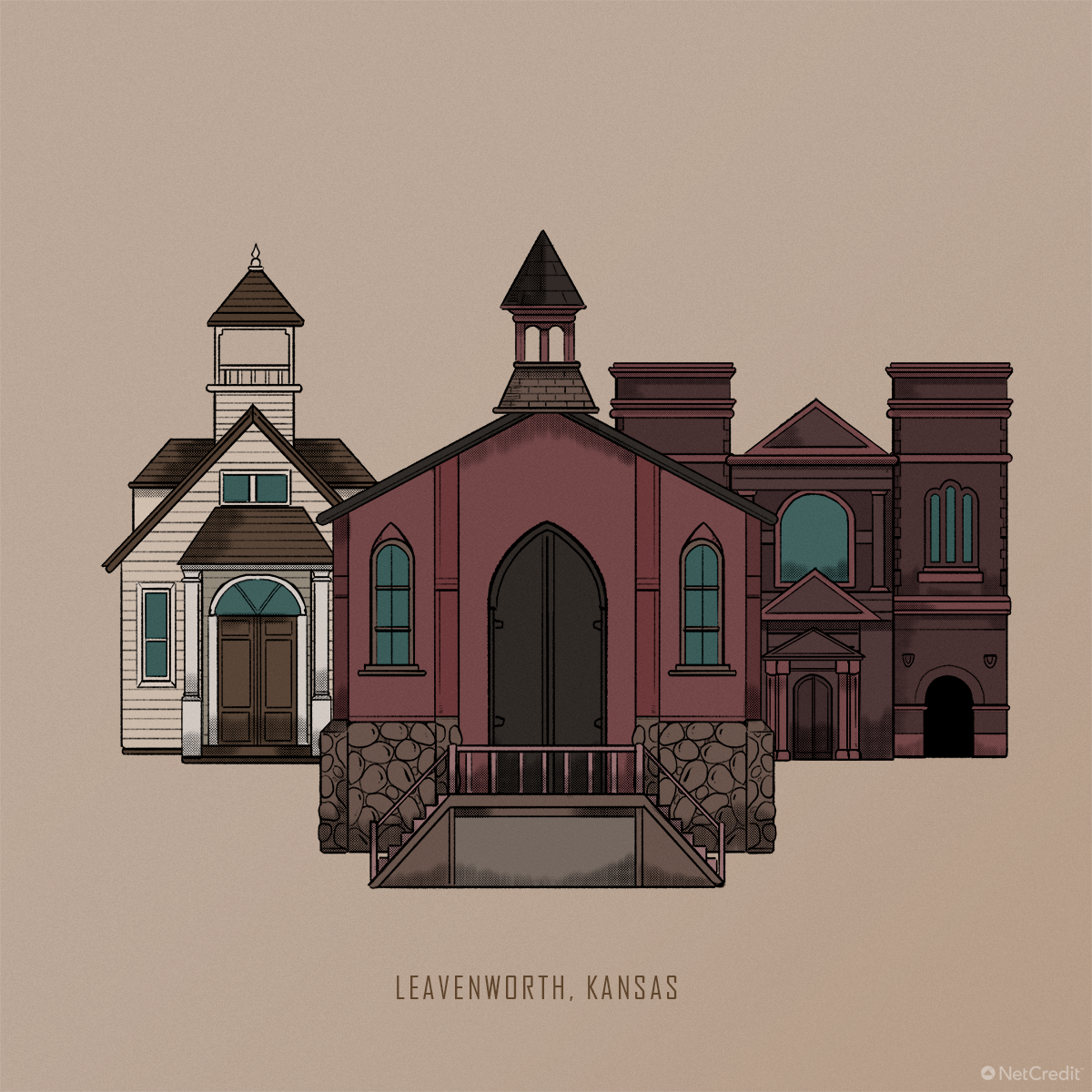
Fort Leavenworth was established to protect the fur and other trades in 1827, but the settlement’s position meant that a great deal of traffic would come through on its way west. As such, the city of Leavenworth was established in 1854 and quickly boomed — despite regional uprisings by local and forcibly relocated Native Americans whose land treaties were trashed as whites expanded into the area.
43. Dubuque, Iowa — 1837
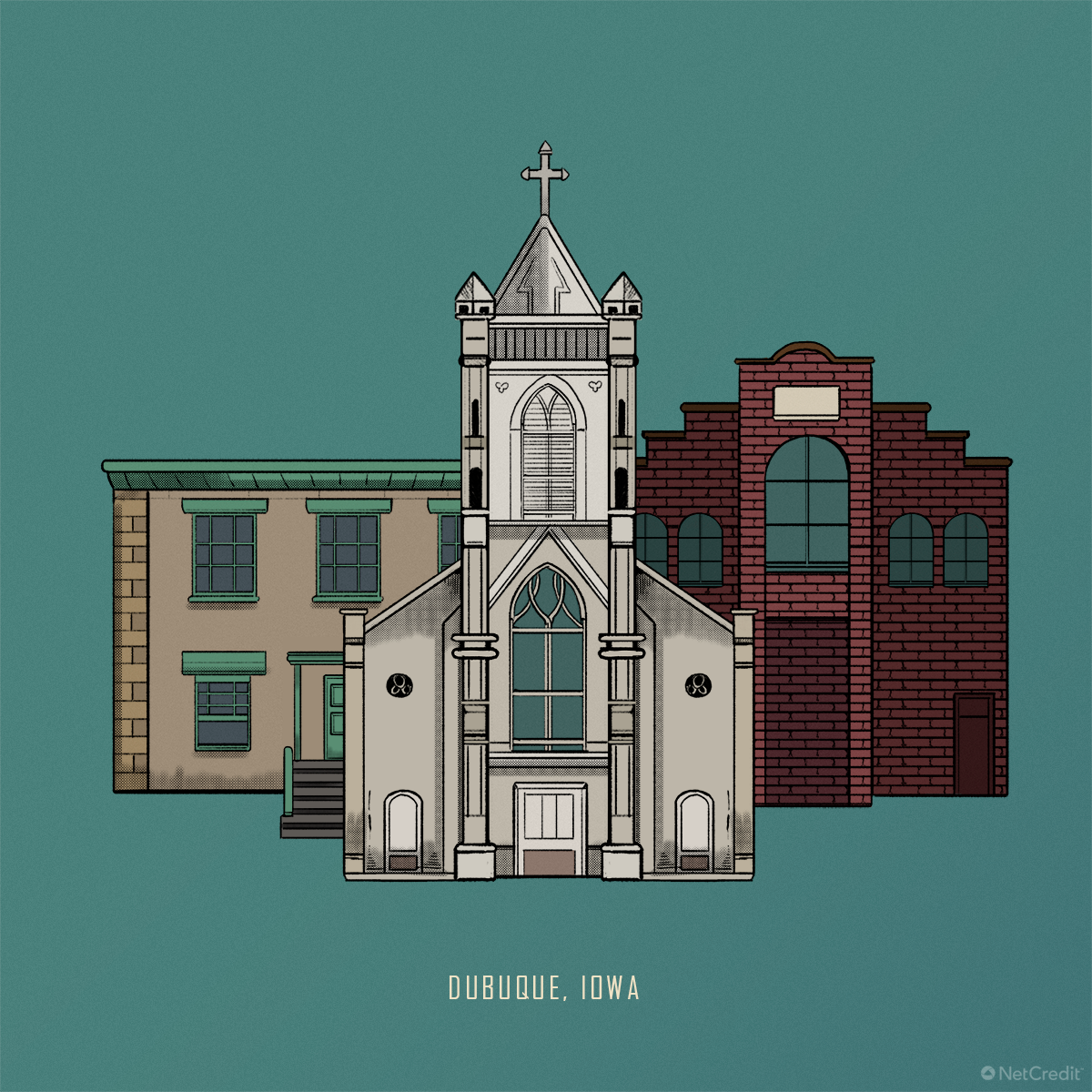
Julien Dubuque, a French-Canadian fur trader, arrived in the region in 1785, and formed close friendships with the local Mesquakie Indians, who revealed to him the location of valuable lead deposits nearby. After Dubuque’s death, the government opened up the area for settlement. The city named Dubuque was established in 1837 as immigrants from the east coast rushed to take advantage of the land’s resources.
44. Stevensville, Montana — 1841
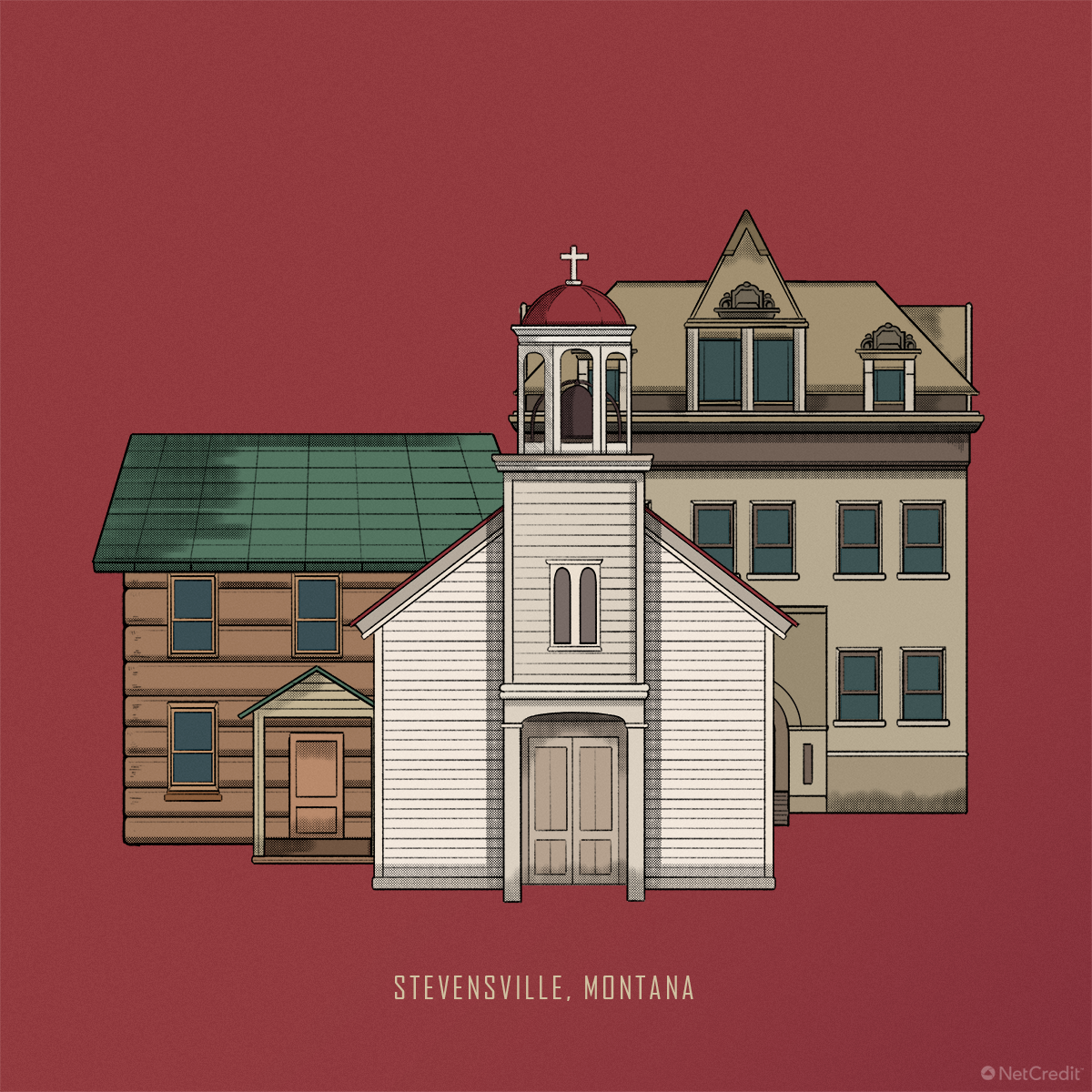
Jesuit missionaries formed Saint Mary’s Mission at the site that would become Stevensville, on the request of representatives of the Salish tribe — who wished to learn about European methods of agriculture and medicine and the Jesuit’s unique religious ways. White settlers would drive the Salish out of the area within half a century.
45. San Luis, Colorado — 1851
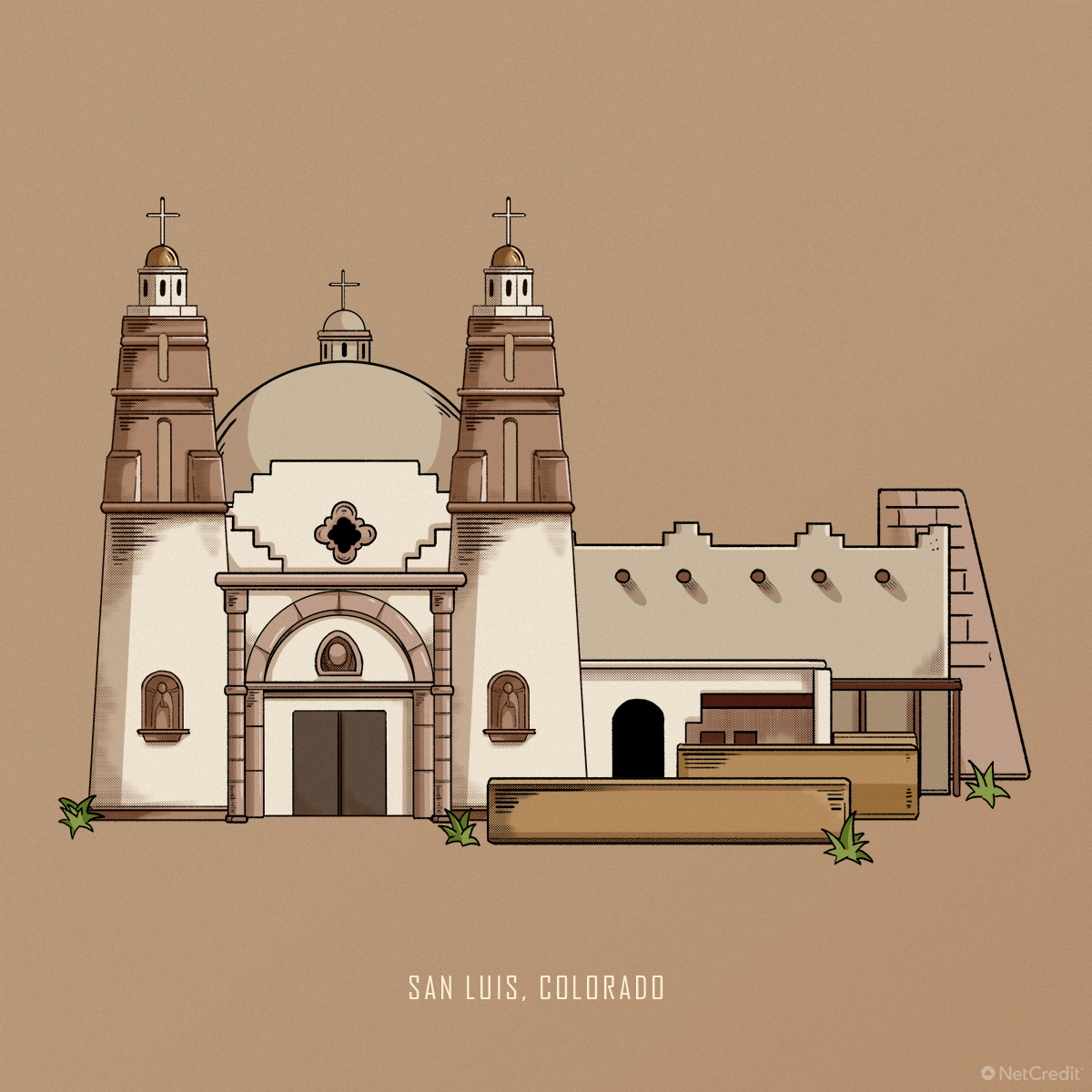
San Luis was established in 1851 by Hispano farmers on land that had previously been inhabited for thousands of years. With its Spanish town layout and adobe architecture, this small town of just a few hundred people retains its eclectic historical atmosphere today.
46. Genoa, Nevada — 1851

Separated from much of America by hostile traveling conditions – including bandits on the trail to Salt Lake City — Genoa developed almost in isolation after being established by Mormons. They formed a “squatter’s government,” divided the land and were bolstered by the occasional visitor who might choose to stay on a while. Today the town feels like a step back through time.
47. Ogden, Utah — 1851

The Great Salt Lake Fremont Indians occupied the area of Ogden for almost a thousand years from around 400 A.D., with the Northern Shoshone and Goshute tribes following in their wake. Established as a quiet Mormon town in the late 1840s, it would soon become a ‘junction city’ with the arrival of both the Union Pacific and the Central Pacific rails, and as the population swelled so did its reputation as a wild frontier town of chancers, gamblers, gunslingers and crooks.
48. Steilacoom, Washington — 1854
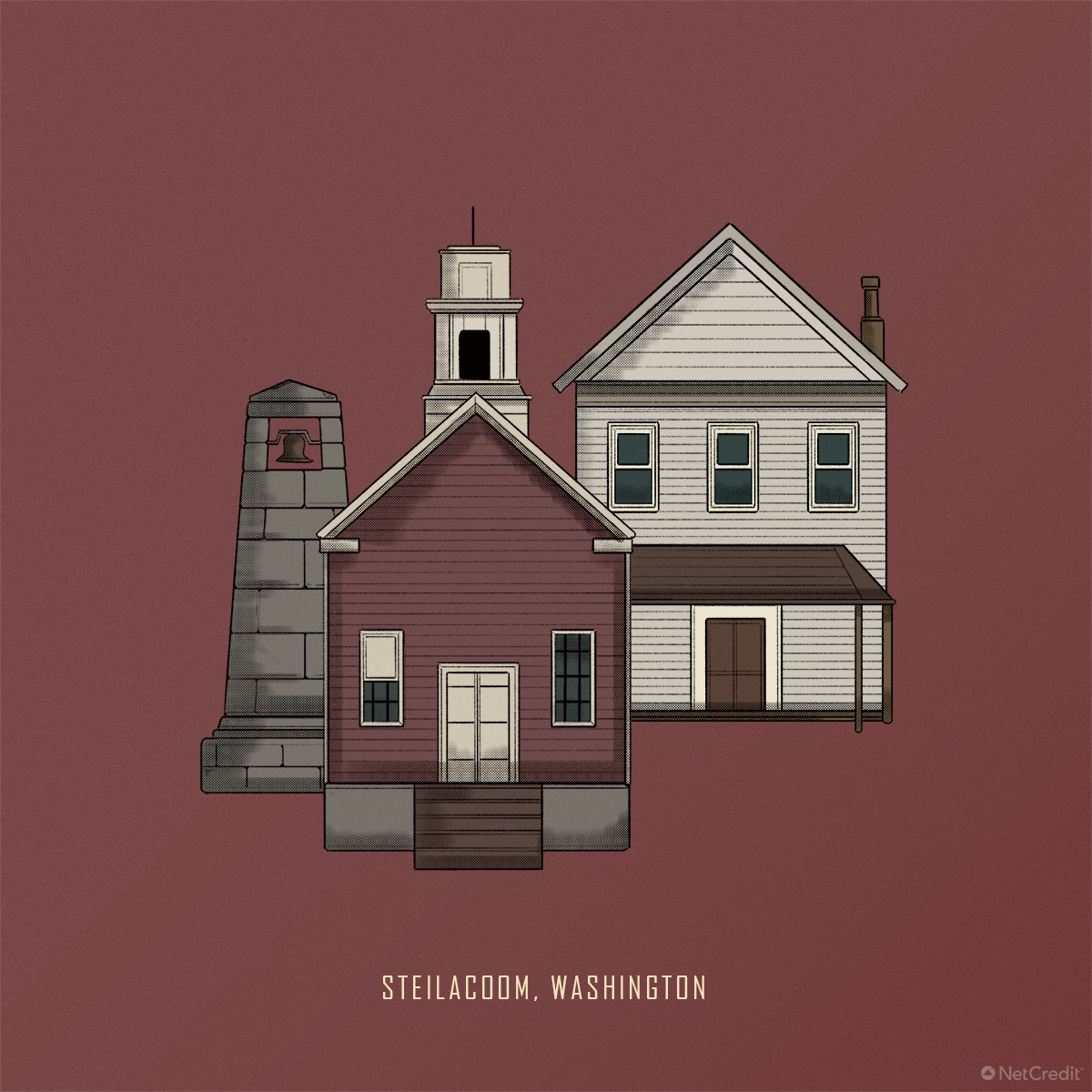
Having originally been settled by British sailors, for a brief period in the 1850s-60s the waterfront colony glistened with promise as a timber town serving San Francisco — and aspiring to rival it. The civil war and the superior ports of Seattle and Tacoma arrested the town’s development, and today it is a quiet residential community.
49. Franklin, Idaho — 1860
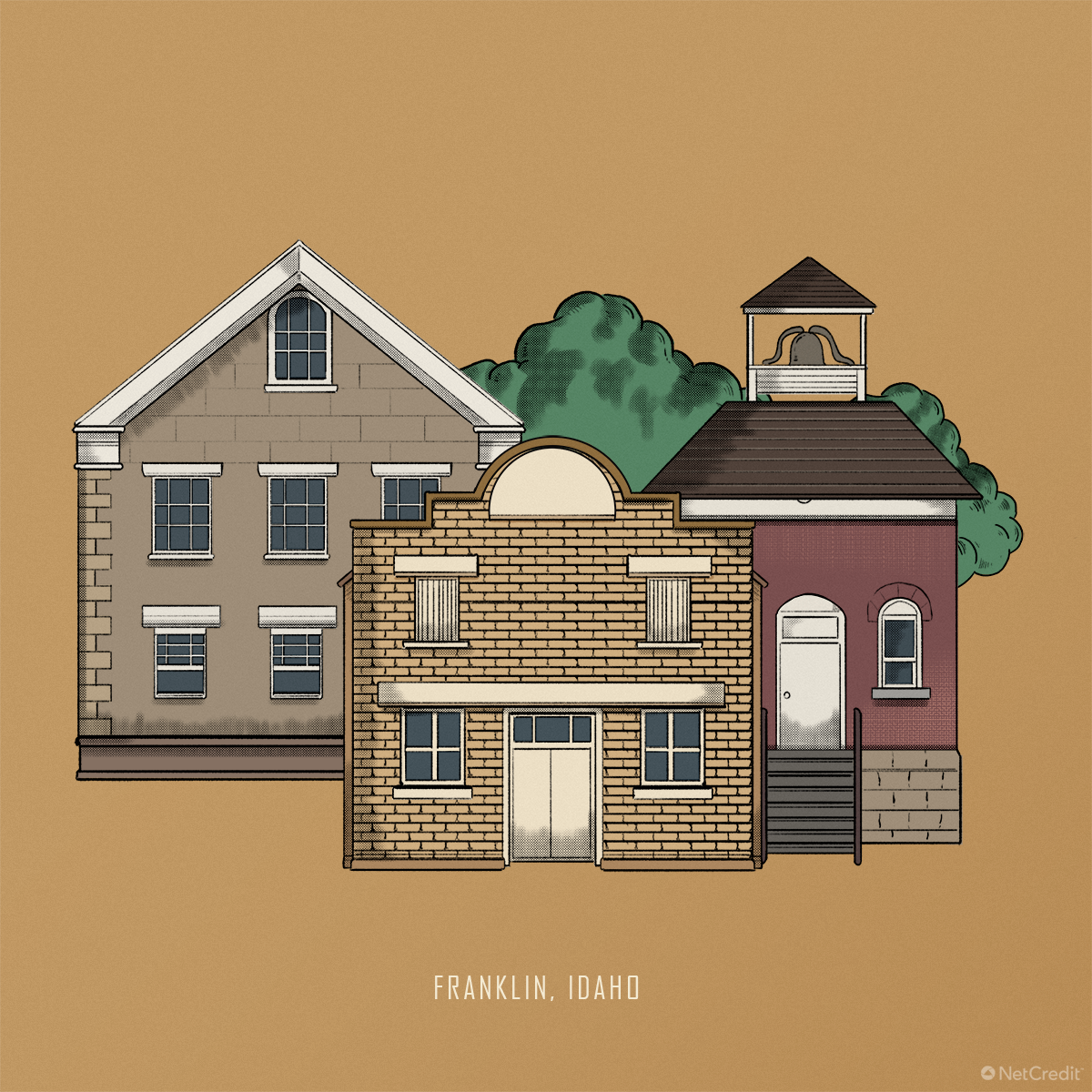
This Mormon town, named after an Apostle for The Church of Jesus Christ of Latter-Day Saints, was for some time believed to be in Utah, where it would not have been the oldest town. Thankfully, an 1872 survey revealed that Franklin was actually a mile within Idaho state lines.
50. Cheyenne, Wyoming — 1867
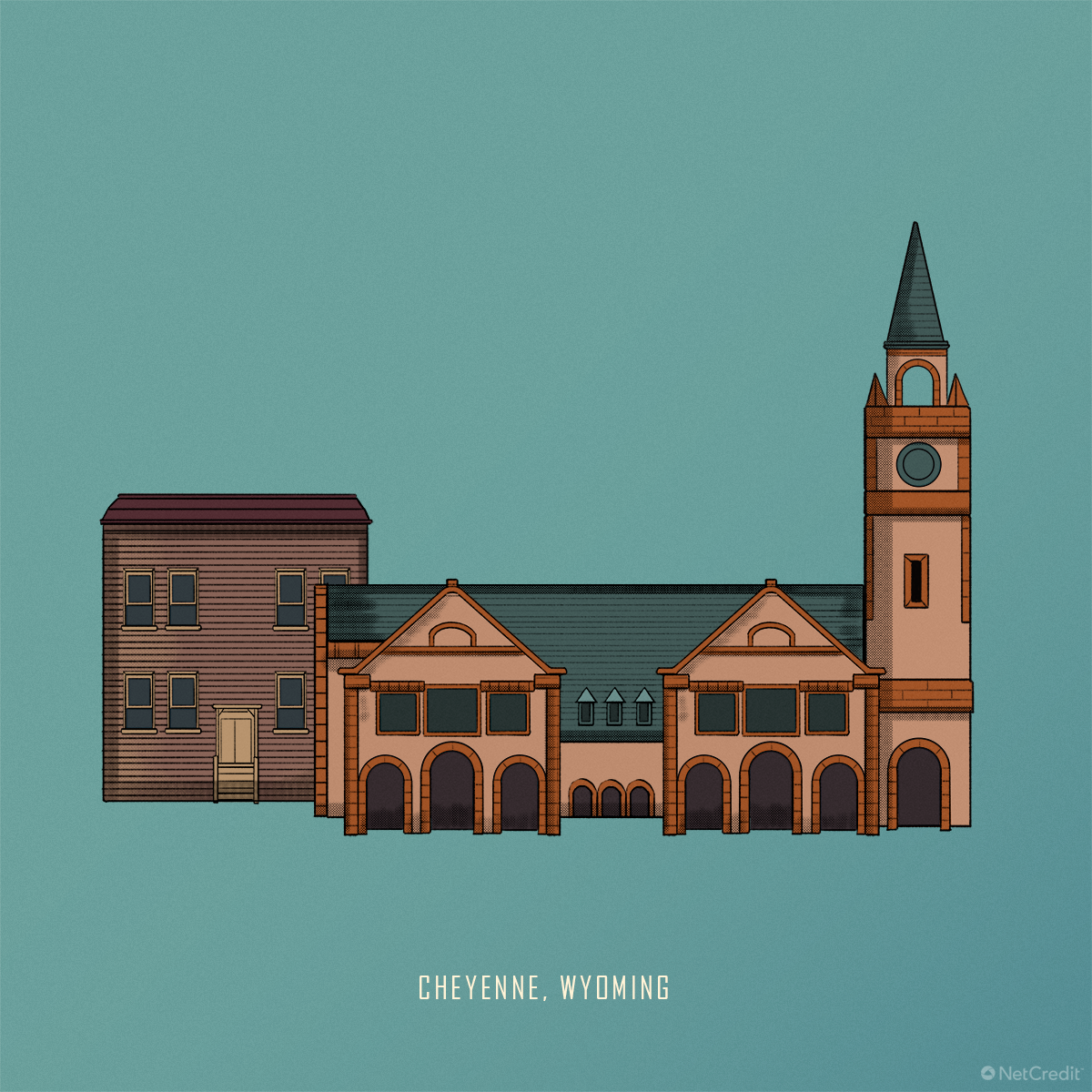
Nicknamed the “Magic City of the Plains” for the speed at which it flourished following the arrival of the Union Pacific Railroad, Cheyenne took its proper name from an Algonquian tribe that had previously lived in the area.
Summary
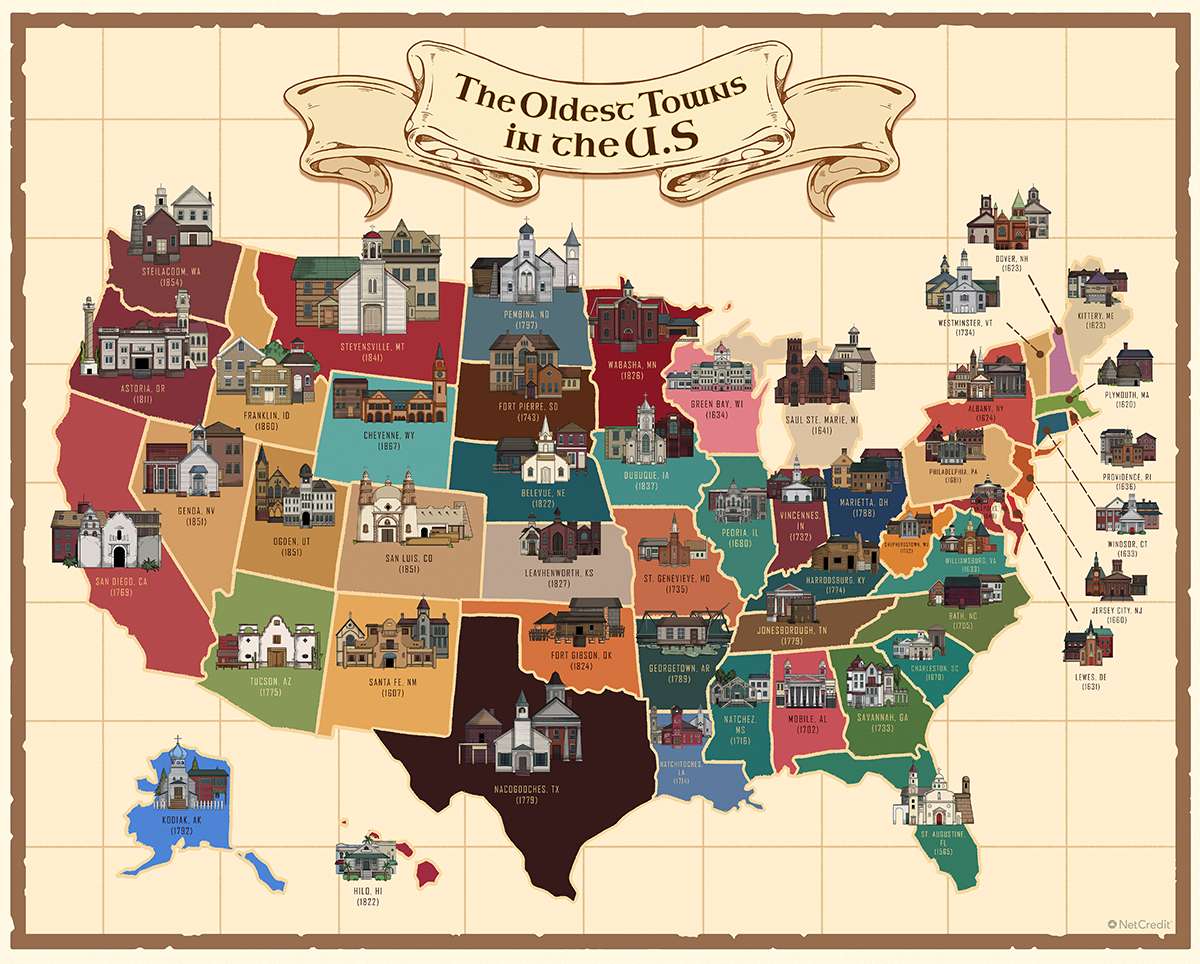
The animation and images which have been created help tell the tale of European settlers and the towns which they founded. By watching the animation or reviewing the dates in the map shown above, you can see how the routes that the settlers took influenced where the oldest towns are found.
Click here for the full research behind this visualization.
Interestingly, the age of the towns in this article do not at all correspond to the chronological order as to when the states of the United States were officially admitted into the Union — although Saint Augustine and the state of Florida were both settled in the year 1565. Compare this list to the chronological order of the towns featured in this article:
| Number | State | Date State Entered Union | Year State Was Settled |
| 1 | Delaware | Friday, December 7, 1787 | 1638 |
| 2 | Pennsylvania | Wednesday, December 12, 1787 | 1682 |
| 3 | New Jersey | Tuesday, December 18, 1787 | 1660 |
| 4 | Georgia | Wednesday, January 2, 1788 | 1733 |
| 5 | Connecticut | Wednesday, January 9, 1788 | 1634 |
| 6 | Massachusetts | Wednesday, February 6, 1788 | 1620 |
| 7 | Maryland | Monday, April 28, 1788 | 1634 |
| 8 | South Carolina | Friday, May 23, 1788 | 1670 |
| 9 | New Hampshire | Saturday, June 21, 1788 | 1623 |
| 10 | Virginia | Wednesday, June 25, 1788 | 1607 |
| 11 | New York | Saturday, July 26, 1788 | 1614 |
| 12 | North Carolina | Saturday, November 21, 1789 | 1660 |
| 13 | Rhode Island | Saturday, May 29, 1790 | 1636 |
| 14 | Vermont | Friday, March 4, 1791 | 1724 |
| 15 | Kentucky | Friday, June 1, 1792 | 1774 |
| 16 | Tennessee | Wednesday, June 1, 1796 | 1769 |
| 17 | Ohio | Tuesday, March 1, 1803 | 1788 |
| 18 | Louisiana | Thursday, April 30, 1812 | 1699 |
| 19 | Indiana | Wednesday, December 11, 1816 | 1733 |
| 20 | Mississippi | Wednesday, December 10, 1817 | 1699 |
| 21 | Illinois | Thursday, December 3, 1818 | 1720 |
| 22 | Alabama | Tuesday, December 14, 1819 | 1702 |
| 23 | Maine | Wednesday, March 15, 1820 | 1624 |
| 24 | Missouri | Friday, August 10, 1821 | 1735 |
| 25 | Arkansas | Wednesday, June 15, 1836 | 1686 |
| 26 | Michigan | Thursday, January 26, 1837 | 1668 |
| 27 | Florida | Monday, March 3, 1845 | 1565 |
| 28 | Texas | Monday, December 29, 1845 | 1682 |
| 29 | Iowa | Monday, December 28, 1846 | 1788 |
| 30 | Wisconsin | Monday, May 29, 1848 | 1766 |
| 31 | California | Monday, September 9, 1850 | 1769 |
| 32 | Minnesota | Tuesday, May 11, 1858 | 1805 |
| 33 | Oregon | Monday, February 14, 1859 | 1811 |
| 34 | Kansas | Tuesday, January 29, 1861 | 1727 |
| 35 | West Virginia | Saturday, June 20, 1863 | 1727 |
| 36 | Nevada | Monday, October 31, 1864 | 1849 |
| 37 | Nebraska | Friday, March 1, 1867 | 1823 |
| 38 | Colorado | Tuesday, August 1, 1876 | 1858 |
| 39 | North Dakota | Saturday, November 2, 1889 | 1812 |
| 40 | South Dakota | Saturday, November 2, 1889 | 1859 |
| 41 | Montana | Friday, November 8, 1889 | 1809 |
| 42 | Washington | Monday, November 11, 1889 | 1811 |
| 43 | Idaho | Thursday, July 3, 1890 | 1842 |
| 44 | Wyoming | Thursday, July 10, 1890 | 1834 |
| 45 | Utah | Saturday, January 4, 1896 | 1847 |
| 46 | Oklahoma | Saturday, November 16, 1907 | 1889 |
| 47 | New Mexico | Saturday, January 6, 1912 | 1610 |
| 48 | Arizona | Wednesday, February 14, 1912 | 1776 |
| 49 | Alaska | Saturday, January 3, 1959 | 1784 |
| 50 | Hawaii | Friday, August 21, 1959 | 1820 |
Photograph ©2016 by Brian Cohen.

